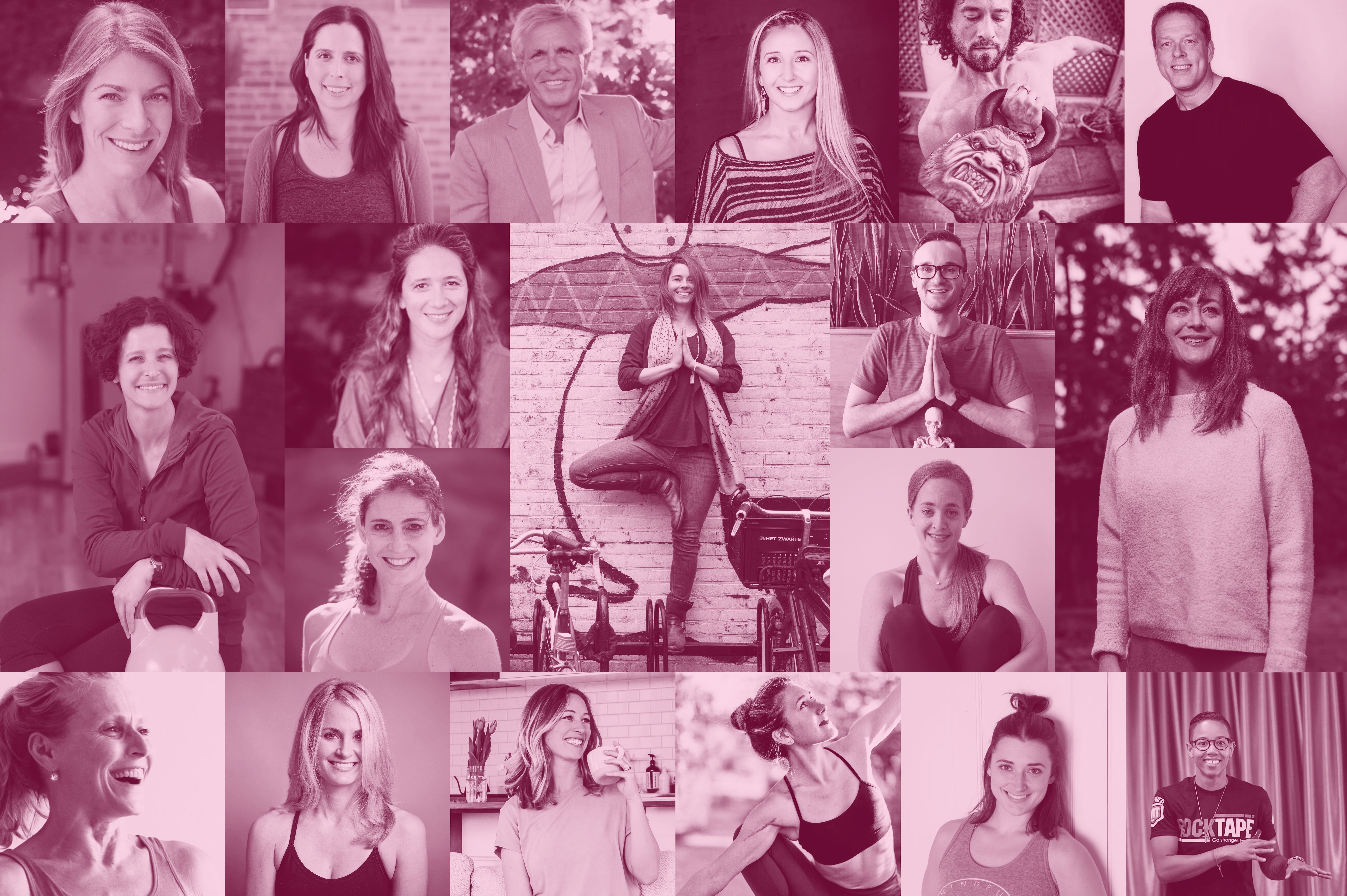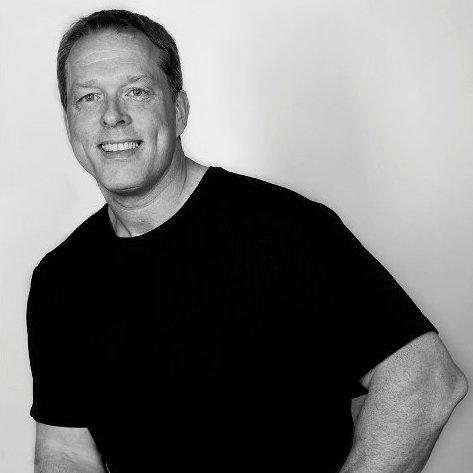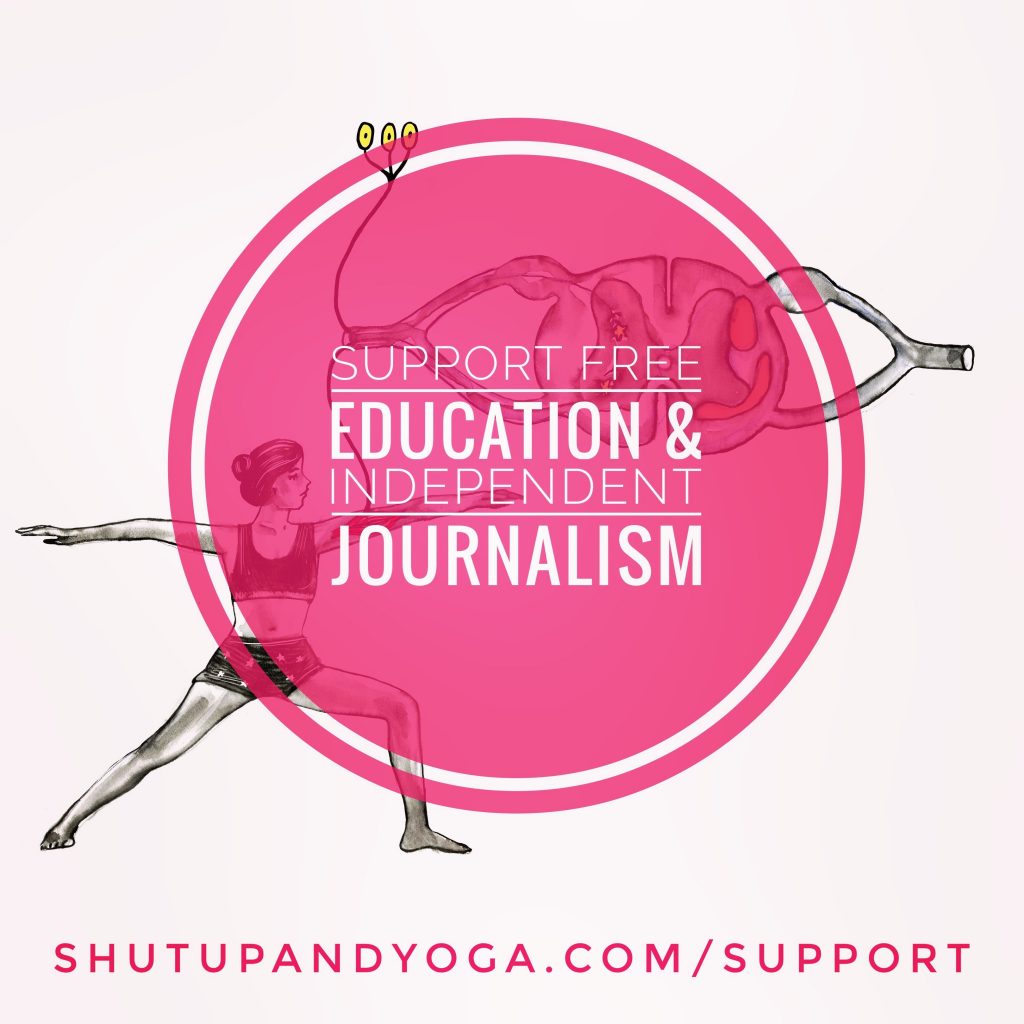2020 Update and Disclaimer:
This article features Guru Jagat, a Kundalini yoga practitioner, teacher, and advocate who recognizes Harbhajan Singh Khalsak, known as Yogi Bhajan, as her guru. At the time of writing, our team wasn’t aware of the allegations against Yogi Bhajan. We recognize he is an abuser who broke countless people’s lives. We encourage kundalini practitioners and curious yogis to research traditional kundalini yoga, a practice much older than YB and still alive in India today.
Whether you’ve been practicing traditional yoga, dabbling with, or even geeking out on multi-disciplinary and science-informed movement, we hope that you will benefit from meeting these movement explorers and forward-thinkers.
We haven’t exclusively featured yoga teachers, and a few of them represent different movement disciplines. While those teachers might not be yogis in the traditional sense of the word, they’re all passionate about movement, physical & mental well-being, and we have a lot to learn from them.
Their teachings help us discover, explore, and adopt new tools for our yoga practice. They help us grow individually and as a community, become better human beings, and feel more aligned within our minds and bodies.
User’s manual:
Our intention isn’t for you to have to pick a side between traditional yoga and modern functional movement. Add the tools that those people put out there to your own toolbox, and use critical thinking. We also encourage you to mix and match techniques, views, and practices, to build your own unique movement philosophy. Choose for yourself!
Note: The choice to include those teachers is highly subjective, and only reflects the opinion of the Shut Up & Yoga team.
Table of content:
- Carrie Owerko, PerMISSION to Play
- Brea Johnson, Heart + Bones Yoga
- Perry Nickelston, Stop Chasing Pain
- Jules Mitchell
- Garrett Neill, Dr. Yogi Gare
- Lara Heimann, Movement by Lara, LYT
- Lizzie Lasater
- Jill Miller, Yoga Tune Up
- Cecily Milne, Yoga Detour
- Trina Altman, Yoga Deconstructed & Pilates Deconstructed
- Kathryn Bruni-Young, Mindful Strength
- Jenni Rawlings
- Katy Bowman, Nutritious Movement
- Giulia Pline, Physiyoga Teacher
- Guru Jagat, RA MA Institute
- Jenn Pilotti, Be Well Personal Training
- Shante Cofield, The Movement Maestro
- Hunter Cook, Hunter Fitness
- Tom Myers, Anatomy Trains
Carrie Owerko
PerMISSION to Play
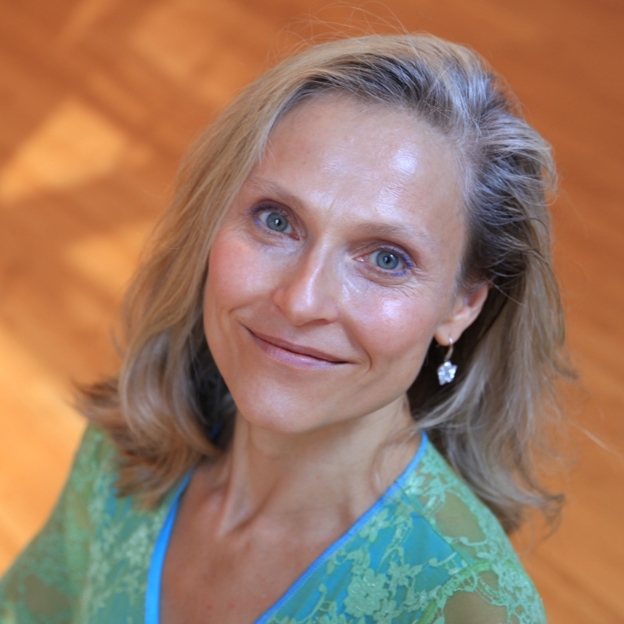
Carrie’s favorite word: play. “It’s the word that makes me smile. It always has. I was struck at a young age in the darkness of a theater before the lights came up.”
Carrie has spent a lot of time in dance and theatre, and those are practices that have influenced her as a movement educator as much as an individual. Her movement teachings are also influenced by her studies at the Laban Institute of Movement, and her study of Pilates and yoga. Besides those disciplines, Carrie feels strongly about the necessity of play: it adds joy and ease to our practices, and ultimately (and more importantly) to our lives.
She shares 3 tenets of improvisational theatre and dance that have impacted her life. The first one is “yes, and…”, a rule in improvisation that suggests to work with what you’re given rather than negating. It means focusing on being part of the dance, of the scene writing, and letting go of control. This “yes, and…” also represents how she sees yoga: as a practice to build awareness and welcome possibility, to come home to yourself, like to a good friend, where resilience can be practiced. So just like it feels a bit wobbly, when you’re on stage, to add on to your dance or theatre partner’s idea, Carrie hasn’t always felt safe to question the lineage of the yoga she practiced.
The second tenet is the permission to fail, which ultimately means allowing yourself to create, let go of inhibitions to make space for learning, and respect others’ ideas too.
This, in Carrie’s mind, is important to remember in a space where it’s easy to fall into the trap of utmost reverence toward our teachers – a trap where critical thinking and novel ideas aren’t welcomed, though necessary. This also means that creation can happen, even if we’re not sure what end product will be born out of it. It allows for variety in loads, movements, experiences, and also play, experimentation, and questioning. It supposes staying a lifelong student and keeping the beginner mindset.
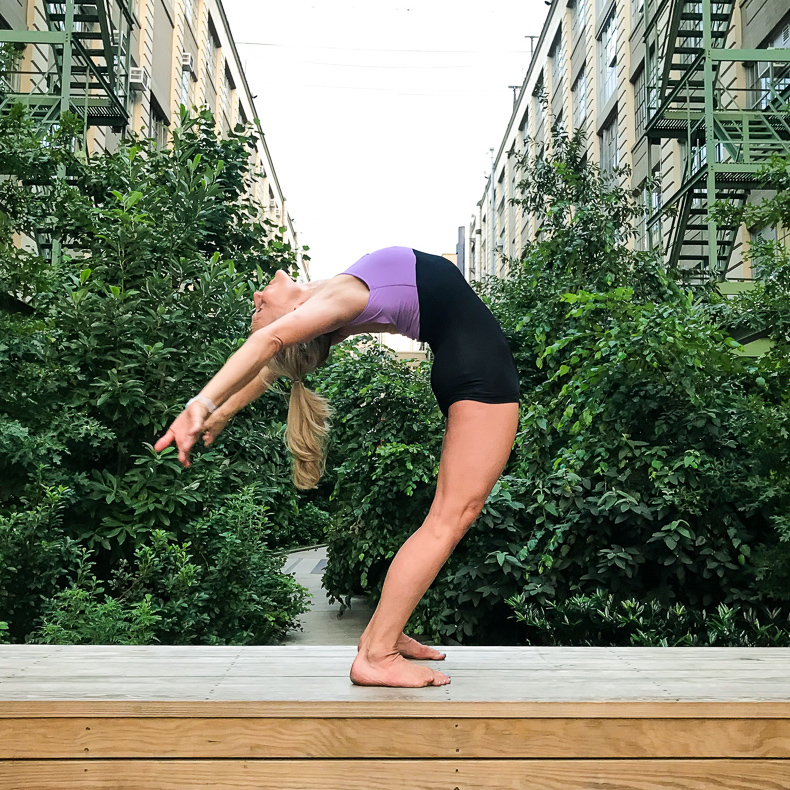
This leads us to the third tenet which is to “focus on process, not product.” Translated to yoga, it means that instead of focusing on poses, we emphasize building awareness, stability/mobility, and resilience. Play is a part of the process; to Carrie, play is a way to lighten up our practices and embrace the process of experimentation. Besides a disciplined practice, Carrie’s teachings might include rolling, crawling, bridging, moving from sitting to standing and various locomotion tasks, which are fun and important skills, and, in her opinion, the foundations of all our movements. In an attempt to not give into what she calls the “trap of overteaching,” she encourages students to be moved (wink wink) by the simple desire and curiosity to explore. Movement is a practice of feeling, and adding play through the process means we make space for learning, growth, and evolution.
Through these tenets, inquiry and a desire to embrace the not-knowing-ness, Carrie intends to create learning spaces where we can make meaning for ourselves as individuals, in our own specific contexts, and remain open to different possibilities.
Favorite way to move: “I think it is important to try and move almost every joint, every day, in as many ways as you can! It can be fun, it feels good, and it doesn’t have to take a lot of time. I like to explore poses and practices that challenge strength, balance, mobility, and stability.”
Favorite prop to use: “I like to mix things up. For a while, I was into doing all kinds of things with a foam roller (not just rolling!), and I’ve always loved using resistance bands. I’ve created an extensive video series using a chair, done many things with belts and blocks, and roll on balls for down-regulation pretty much every day. It’s hard to narrow it down to a favorite.”
What turns Carrie on: “I am inspired by learning and by the creative process. That is why I am a proponent of play. For me, it is an essential component of creativity, spirituality, and emotional health and well-being.”
And off? “Dogma, orthodoxy, or fundamentalist thinking. Dogma stops inquiry and evolution. It shuts down conversations and the opportunity for true learning.”
Check out Carrie’s Instagram, her website where to find workshops and classes to attend in NYC, out of town, and online.
Brea Johnson
Heart + Bones Yoga

Brea’s favorite word: love. “It sounds cheesy, but damn, we can never have enough self-love, love for each other and love permeating this world.”
Twenty years ago, Brea felt intrigued by the practice of yoga and knew she had to get into it. Despite challenges she came across along the way, the practice still makes her happy. At a time when her questioning of yoga came to a peak, she found Katy Bowman (featured in this guide too), whose training gave her the confidence to move in the direction her intuition had increasingly been guiding her toward. Taking that direction meant learning the basics of movements – biomechanics, and the science to back up what she’d been feeling – and apply them to yoga. To her, teaching yoga now is about giving practitioners and future teachers the tools to understand movement so they can incorporate them into their lives to meet their own needs. In other words, it’s about teaching students to fish rather than giving them fish, so they can adjust their practice purposefully to everything they do.

She stopped calling herself a yoga teacher for a while since she’d geared away from the traditional practice. Over time, though, she went back to it: teaching a progressive kind of yoga means honoring it as a living tradition, using the knowledge we have access to today to make it sustainable for our modern bodies. In Brea’s experience, people are increasingly more eager to learn about the fundamentals of movement, and also to question the yoga we know today, its hierarchy and dogmatic practices.
To her, yoga is a self-expression outlet, a toolbox for self-care and personal evolution, a practice she calls ‘human being training,’ and the channel through which she invites people to move with love in everything they do.
Those values are the foundations for the way Brea moves herself: listening to what her body asks for on a particular day and making sure she has savasana or a form of rest in each daily mix. Those values are also the basic principles for the way she uses social media: it’s a place where she shares in order to be helpful about the “heart” – mindfulness practices – and “bones” – movement education. It’s an outlet where she can express her creativity and foster community through conversations in the comment section.
Brea finds inspiration in books, namely science fiction and fantasy, genres she believes ask big questions about our humanity and our future. Moving to music, learning about the world and herself, spending time in nature, all feed her mind and keep her moving with love and creativity.
Favorite way to move: “I have a couple of favorites. Downdog is an old standby. Warrior one (with the back toes tucked under) gets into so many great places at once and is super versatile, a bunch of different variations you can do with it. And glutes! I find myself often teaching glute and hamstring classes because so many people need more backside strength.”
Favorite prop to use: “Bolsters! Not just for lying around on, there are so many fun ways to use them. ”
What turns Brea on: “Curiosity and learning about anatomy and movement, but also about our world, about myself. And dancing!”
And off: “I’m sure there are a bunch of little things that turn me off daily, but in the big picture, I really try to be as compassionate as I can towards others. It’s so easy to misunderstand each other as we are all complex beings living in an often f-up world, so I try not to go down the judgment rabbit-hole.”
Check out Brea’s Instagram, take a tour around her online studio, or join her Facebook community.
Perry Nickelston
Stop Chasing Pain
Perry’s favorite word: strength. “Because it is born out of challenge and change.”
Perry is a life-long movement practitioner and advocate; when he injured himself, chiropractic helped him and served as a wake-up call to start doing the same for others. Part of that decision to teach was also inspired by Gray Cook, a physical therapist who taught him how functional movement can change our lives. Perry believes that movement should be adaptive: we need to use our bodies more, move more often, in different environments, and the more we know about and master the fundamentals of movement, the better we can move in a way that is beneficial to our overall health.
According to Perry, movement is a way to feel empowered and take back control of our sedentary lives; we have to be smart and use the knowledge we have about the body and the brain to enhance our living conditions. More than a simple job, sharing, teaching, educating and therefore, continuing to learn, is a lifelong mission for Perry.
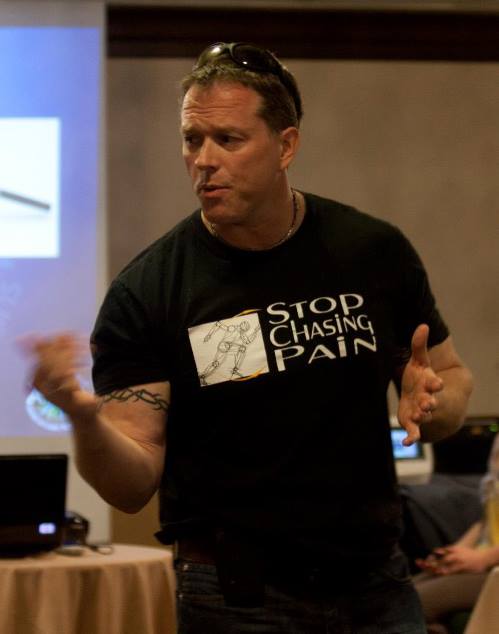
Perry believes that less is more – you might even be surprised by what his favorite movement is (see below)! He urges us to get out of our own way and stop overthinking, reminding us that it’s by doing that we learn and that playing it safe just has us stagnant and stuck in our own condition. He believes in evolution, which he gains through goals and discipline, reading 3 (or 5) books simultaneously, to make sure not only his body is moving every day, but that his brain also gets the opportunity to remain active and strong.
Favorite way to move: “The Fall Matrix where you get up and down off the floor many different ways daily.”
Favorite prop to use: “My hands are always number one. Second would be resistance bands and then Rockfloss.”
What turns Perry on: “Books. I love seeing how someone else teaches a concept; I love learning and sharing.”
And off: “People who don’t open their minds to possibilities.”
Check out Perry’s Instagram and his website to find resources, courses, and events.
Jules Mitchell
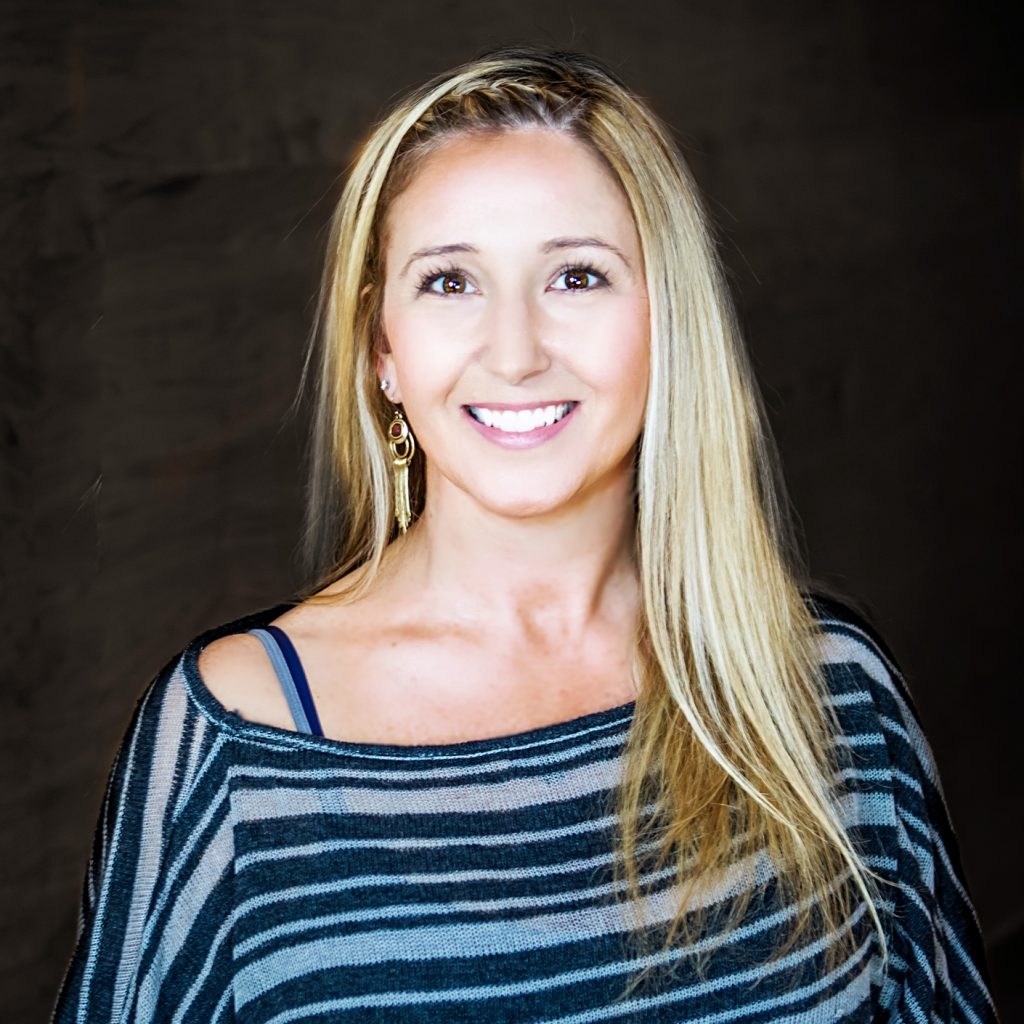
Jules’ favorite word: thinker. “A thinker is a person who doesn’t just think, but who thinks critically, who imagines, who invents and creates.”
Jules’ plan was never to become a yoga teacher, and making it her full-time job didn’t happen until later in her career. Today, she believes movement should be progressive, specific, variable, and enjoyable – an outlet for us to feel like ourselves. In her teachings, she focuses on passing on biomechanics knowledge, so our movement is informed and based on scientific explanation.
Even if her approach to yoga isn’t traditional, she still considers herself a yoga teacher: “If those of us leading the evolutions jump ship, we aren’t doing yoga much service,” she comments.
To Jules, yoga means awareness, and this definition takes many shapes in her every day, including providing education to the yoga community and practicing according to what her body needs. It’s also how she uses social media: so it allows her to stay focused on her teaching or writing work (a habit she gained while being in school), or being surrounded by people who think and question the world like she does. Awareness is also reflected in how she approaches smaller details with curiosity. She’s fascinated by how words and punctuation are put together used in books, or how classical and electronic dance music have more in common than we think (so she says!).

Jules commits to moving in a variety of ways outside of traditional yoga styles. She does strength training, running, Pilates, Gyrotonic, tai chi, resistance stretching, Feldenkrais, and more. She believes yoga will – and already does – embrace other modalities like those in the future, so it’s easier to make it our own. Beyond movement, music and fiction play an important role in her staying connected and grounded, and the way she enjoys long flights after a teaching weekend.
Favorite way to move: “This changes with time. For a long time, it was the deadlift. Right now, I’m kind of obsessing on backbends.”
Favorite prop to use: “Definitely my rope wall. Next to that would be a yoga chair.”
What turns Jules on: “Education, along with music (electronic dance and classical, among others), well-written books, traveling with my sister, and spending time with my significant other.”
And off: “Disrespect.”
Check out Jules’ Instagram and website.
Garrett Neill
Dr. Yogi Gare
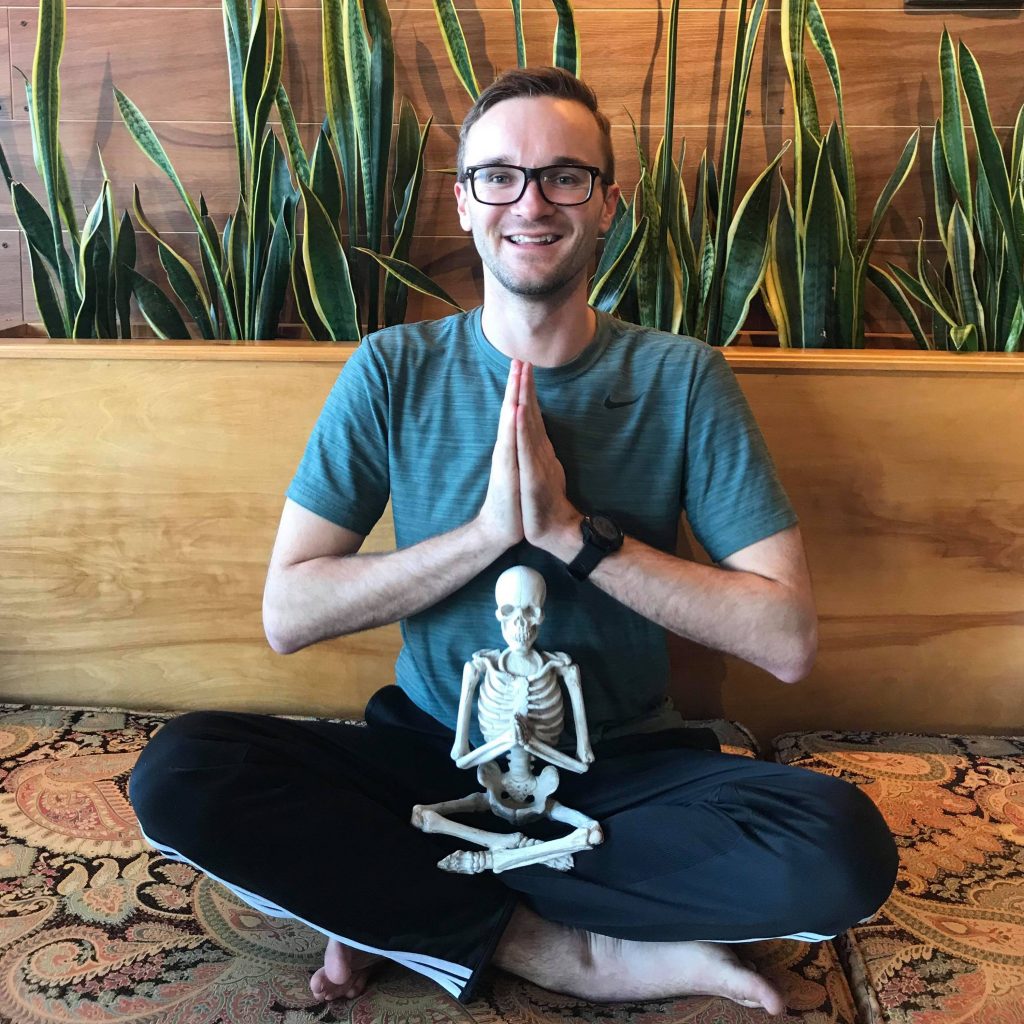
Garrett’s favorite word: brilliant. “Who doesn’t want to hear they performed brilliantly or asked a brilliant question?”
Garrett is both a yoga teacher and doctor of chiropractic, and someone who wants to, in his own words, “share [his] highest level of ignorance with others.” This means that he spends a significant amount of his time learning about and breaking down complex information relating to neurology, biomechanics, and applied anatomy. The goal? Make it accessible to non-neuromusculoskeletal-system-experts, and both digestible and practical when read from an Instagram caption. He believes that understanding is what makes us better teachers, students, and human beings.
Speaking of social media, that’s where Garrett likes to keep his curiosity fed: scrolling through his feed to learn and take part in what some call “Yoga Renaissance,” where critical thinking and science are the main ingredients to the new wave of thinking and doing yoga.
The result of this Renaissance is smarter teachers, more accessible and intelligently sequenced yoga classes, and an emphasis on safety and sustainability rather than depth and aesthetics. This is what you’ll learn with him through his Monday “technique tidbits” and “philosophy Fridays,” along with what he’s currently exploring and working on.
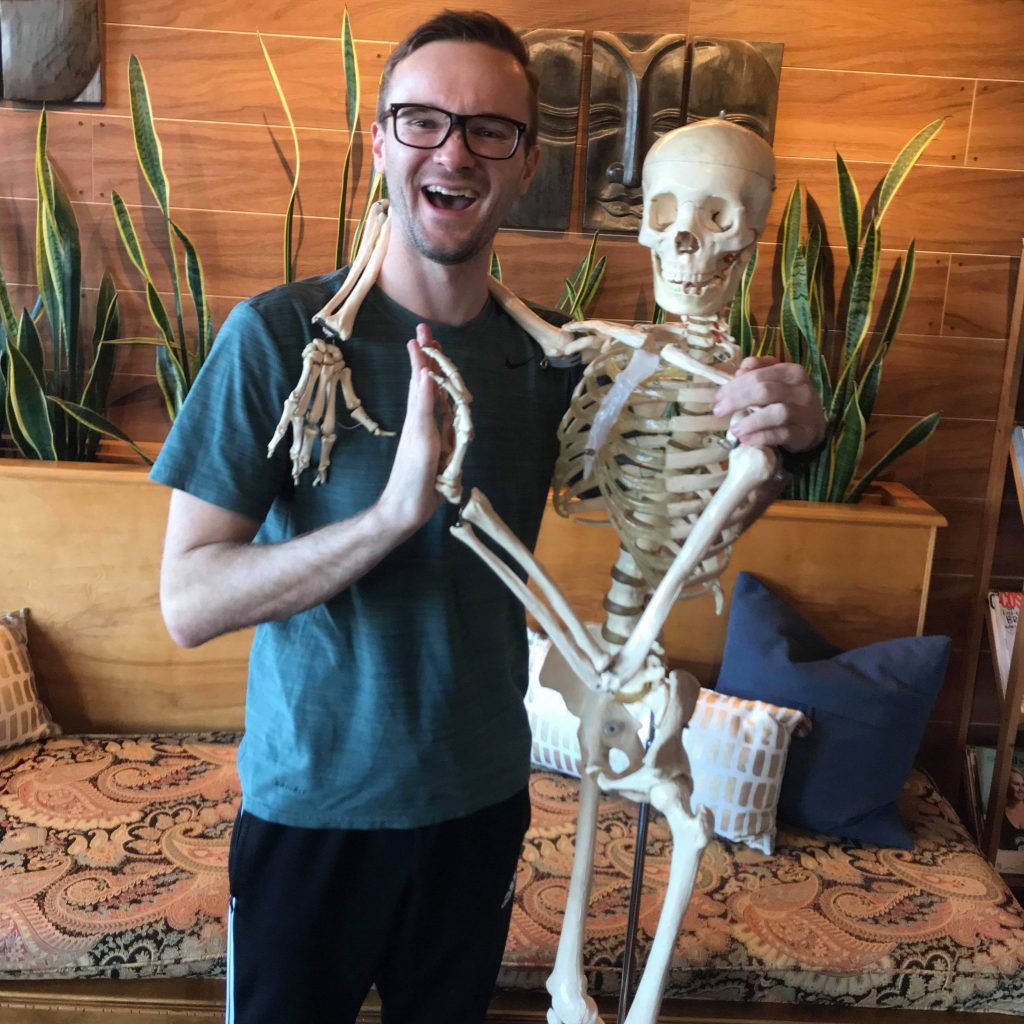
According to Garrett, two important components to movement are fun and variability, which shows in the way he teaches and learns. He enjoys his yoga practice but also likes integrating mobility and strength drills (like kettlebells) – and he recommends we find the mixes that work for our needs and goals. Fun and variability are his general life values as well – not only does he enjoy a good book on science (anatomy, physics, space, you name it), but also those on history or philosophy, maybe with a pint of beer or a glass of whiskey in hand.
Favorite way to move: “Warrior 3s and half-moons are definitely my favorite. I love their variability & accessibility. As for strength/mobility, I love FRC CARs (Controlled Articular Rotations). I will forever and always do them and teach them in my classes. The main one I consistently teach is the Hip CAR, and I’ll also occasionally do the spinal, scapular, wrists, or shoulder ones pending what kind of movement is featured in my class. Since implementing them in the last few months, I’ve seen some amazing results in my students and my own body!”
Favorite prop to use: “I never teach without at least one block. I feel like a yoga barbarian if I don’t have one. Other than that, I absolutely love teaching with resistance bands (instead of straps). For a little while, I used to lug around jumbo bouncy balls (like lacrosse balls) to do myofascial release as the warm up to my yoga class. It was a cool experiment, and I found it really connected people to the anatomical focus of the class (plus it felt good). Props will always be a feature in my teaching. I cycle through using them, and I think they’re one of the best ways we teachers can add to and customize the physical experience of asana.”
What turns Garrett on: “Learning something new and getting my views and beliefs challenged.”
And off: “Disrespectful actions. Many of us take a lot of time to share, and sometimes we get it wrong. There’s a nice way and an asshole way to discuss this, I lose a lot of respect for those of us who choose the latter.”
Check out Garrett’s Instagram, website, his author page here on Shut Up & Yoga, and his book “5 Common Yoga Injuries (and How You Can Avoid Them).”
Lara Heimann
Movement by Lara, LYT
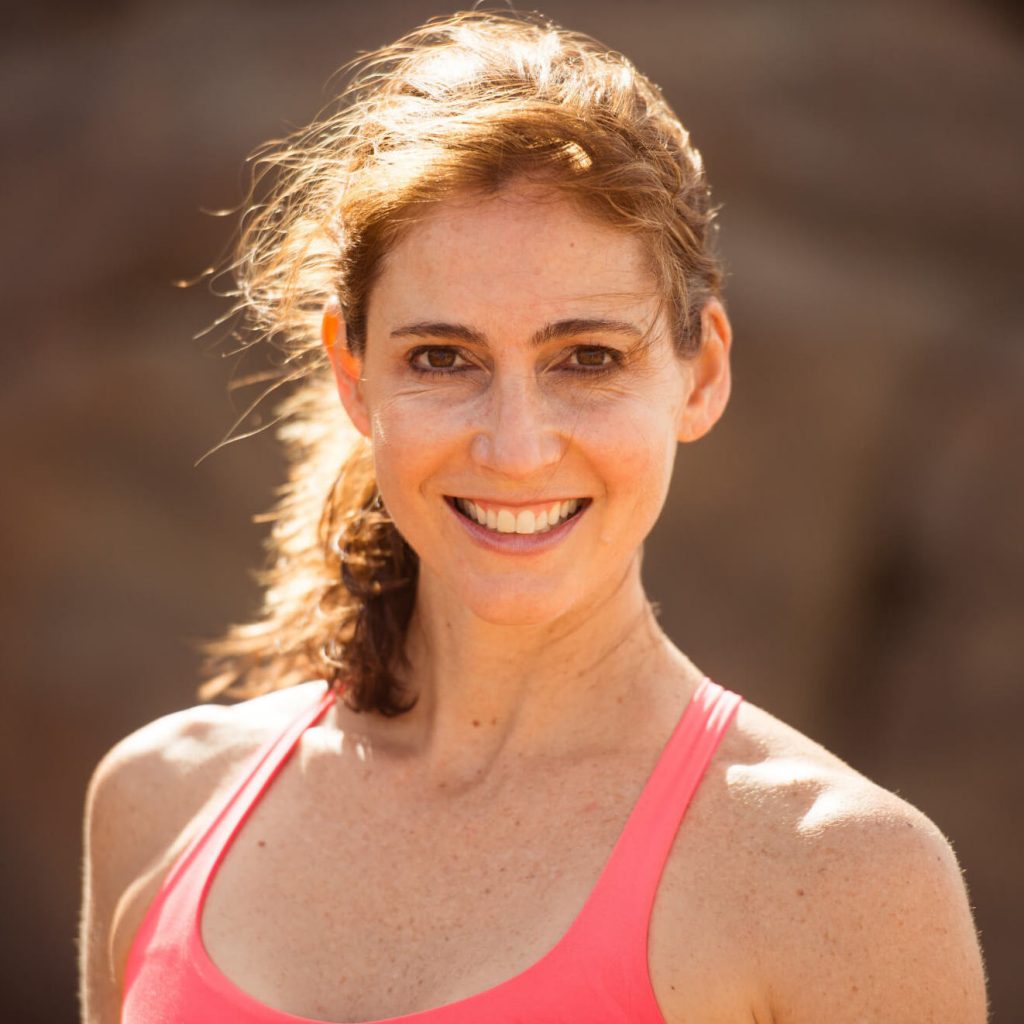
Lara’s favorite word: freedom. “Freedom to live well, to give fully, and to feel deeply. When we free our bodies, our spirits can dance.”
Lara’s desire to teach was born out of the simple joy it gave her to share her knowledge with those who might not have access to yoga classes, at a time where yoga wasn’t as ubiquitous as it is today. Lara is also a physical therapist and neurodevelopmental specialist, so what she teaches is based on her knowledge of the human body and the needs we have as modern movers (or snoozers…). She teaches how to notice where movement is limited or dull, and invites us to bring more attention to those areas, all the while having fun and inviting compassion into our practices.
Lara feels a strong sense of purpose in the work she does and her vision is clear: she has to be of service through education about the body and the spirit.
Yoga, in her opinion, helps to raise individual and collective consciousness. For her, that means paying attention to how we move, act, speak in our lives, and how we make informed and thoughtful choices that make us better human beings.
She leads intense movement practices that help her students reset their patterns, the way they’ve learned to compensate or have accumulated bad habits (like a text neck or overall bad posture). Her teaching, LYT (Lara Yoga Teaching), is meant to provide tools to make movement freeing, efficient and, more importantly, sustainable for our lives on and off the mat (and integrate much-needed core work!).

Being more in tune with our bodies leads to becoming more aligned with our values, which is why using them optimally allows us to gather the optimal energy and headspace to make the right choices off the mat. To Lara, this means spending time on the things that light her up, namely being with her family, spending time in nature with her pets, and of course, working with movement. In the online world, it means learning and sharing what she knows through meaningful interactions and purposeful content.
Favorite way to move: “Handstands and forearm balance are my loves, but I also have to jump! It brings me joy and is amazing for the fascia!”
Favorite prop to use: “yoga block! I often say all you need is a block (and a wall if available).”
What turns Lara on: “Investigation, inquiry, and learning through reading, discussing, traveling and of course, movement. Being a part of a movement that is for a greater good – compassion for all beings – fuels me daily.”
And off: “A hardened, not curious mindset, and cruelty. I have no tolerance for bullies, jealous, and mean people and anyone who is hurtful to animals or children.”
Check out Lara’s Instagram, her studio in Princeton, NJ, take a tour around her online studio, listen to her podcast, Movement by Lara.
Lizzie Lasater
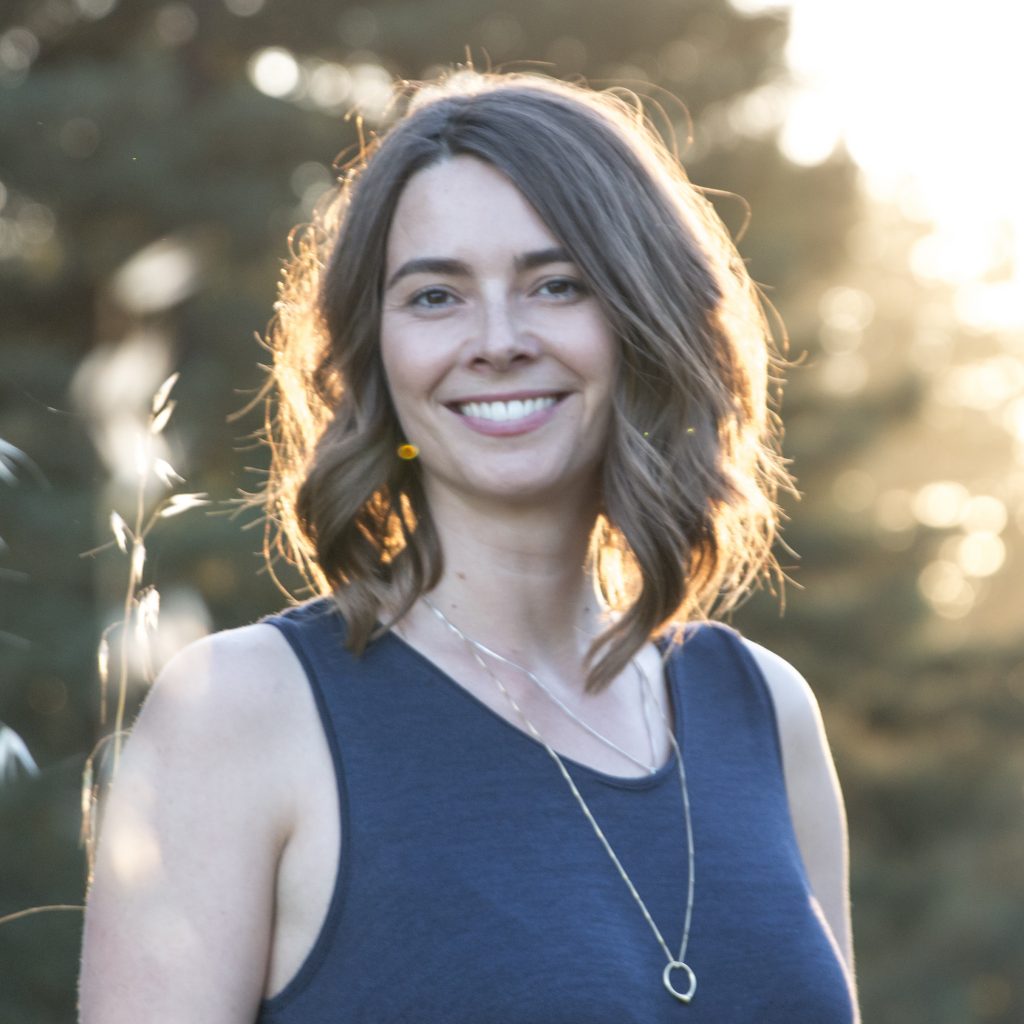
Lizzie’s favorite word: chromophobia (the fear of color). “It suggests that I think about cultivating the opposite, with less fear of choosing colors that I love, which is such a doorway into how to live well, being less concerned with what others will think of us in our choices, and to move more instinctively from our belly brain towards the things that give us more joy.”
Lizzie never wanted to become a yoga teacher. Although she did teach during her college years, she felt more like a parrot repeating what she’d heard from her teachers and her mother, long-time yoga teacher, Judith Hanson Lasater. Instead, she went to design school, then worked as a designer and later, as an architect, before changing the course of her career and letting it blossom into full-time yoga teaching. Now, she sees teaching yoga, creating courses, training yogis to become teachers, as a true privilege.
Lizzie’s goal is clear to her, and it’s a mission she holds very close to her heart: she wants us all to fall in love with savasana – during which, she believes, we have a deeper heart connection to ourselves and each other – and uses restorative yoga to do so.
Restorative yoga is all about putting the body in positions of comfort and ease to support healing and relaxation. Through those teachings, Lizzie creates opportunities to be still, comfortable, in a sort of embodied meditation (which she likes to refer to as “bodyfulness” rather than “mindfulness”).
Intricately connected to this mission is Lizzie’s work with the art of softening (although the wording is ours). She shares that over her yearly travels to India, she gets reminded that there’s only so much we can control. It’s through moments like a heart-warming human connection with the man who offers a 99% certainty policy for when her white shirt will be bleached, that there’s only so much we can ever guarantee. Accepting our limitations might be the best thing we can do to find respect, love for ourselves and our students, and the reassuring idea that everything will be okay.

In that way, yoga as a state and as a practice means “heart up, brain down” to her. It’s a practice and a state she seeks, and the underlying idea behind her teachings, at her retreats and trainings and also on social media. In fact, social media is a place she uses to create, to share, to give, to stay connected to her tribe of global students, but she tends to avoid spending too much time-consuming content as it doesn’t feel healthy and her body doesn’t like it. Honoring her desire to stay away from the things that don’t give her “juice” means disciplining herself not to scroll endlessly. That definitely sounds like a way to practice stillness and work with silence even outside the restorative yoga room.
Favorite way to move: Hiking, biking, skiing and enjoying the mountain ranges of the Alps.
What turns Lizzie on: “Music and hiking. I’m in Austria now and love to spend time outside: breathing the fresh air, going hiking, biking, skiing. When you get to the top of a mountain and see these views, it’s such a creative, heart chakra expanding experience, you feel so wonderfully insignificant. The feeling of awe is very inspiring.”
And off: “I don’t know what I could answer for what turns me off… I’ve really spent the past decade and a half actively cultivating the opposite, so I’m moving in the direction of things that turn me on rather than focusing on my what turns me off.”
Check out Lizzie’s Instagram, her website, her digital yoga trainings with her mother, Judith Hanson Lasater.
Jill Miller
Yoga Tune Up & The Roll Model®
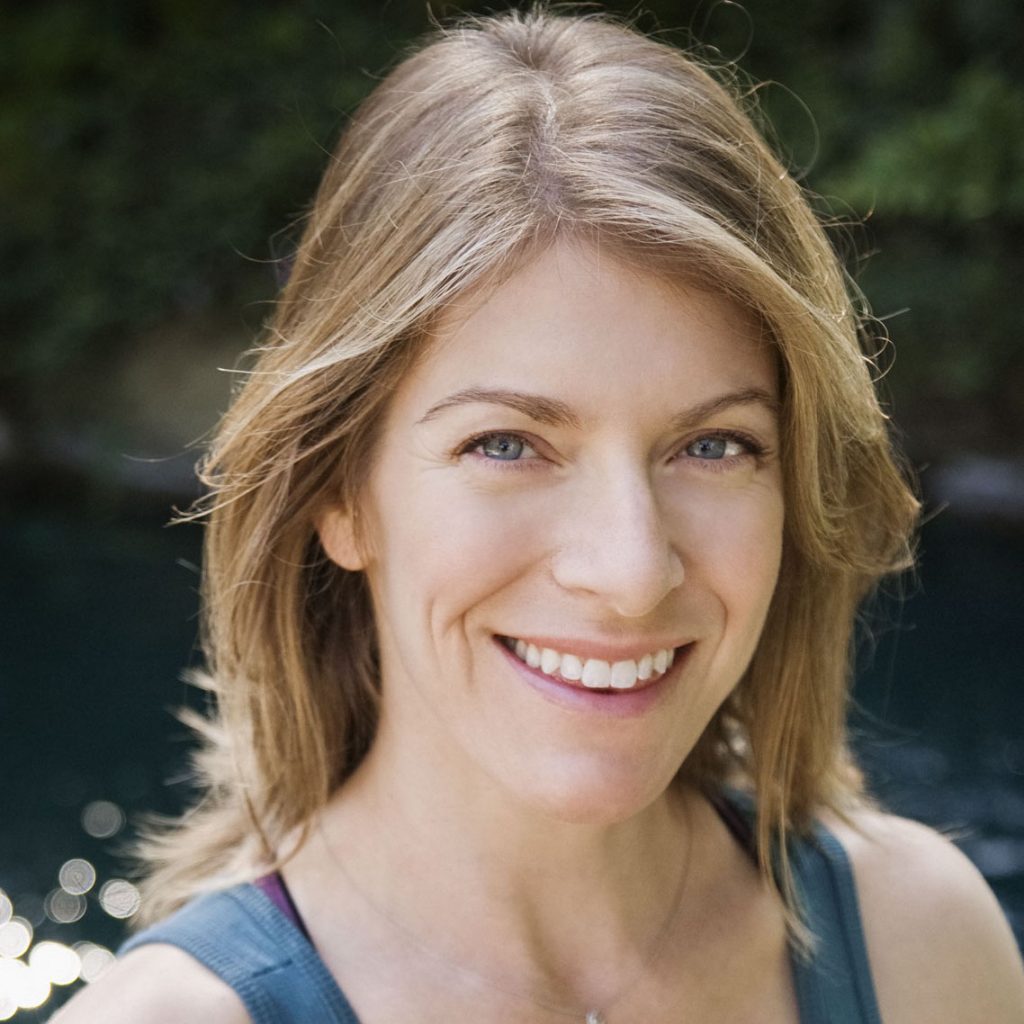
Jill’s favorite word: “My children’s names are my favorite words,
Lilah and Asher. When I say them, I feel infused with love, and it colors my world with compassion and purpose.”
Jill’s desire to teach was born out of her love for and the joy she gets from both learning about movement and her own practice. Although her teaching first began with and still has to do with yoga, she often prefers to call herself a movement educator, or author (she wrote The Roll Model).
Jill’s passion for movement is obvious with a quick look at her social media. She uses her platform to share the science of movement in a way that is helpful, educational, and provocative. She brings attention to finding and healing our body’s blind spots: areas of overuse, underuse, misuse, or body confusion. How? Combining yoga, corrective exercise, Roll Model self-massage, breath strategies, and mindset work to improve proprioception (body sense) and interoception (physiological listening).
On her Instagram recently, you can find lots of talks around diastasis recti (a condition women can suffer from after giving birth, but found in – so she informs – men and children too!), total hip replacement (which she had to undergo in October 2017), and scientific discussions, too (like the problematic use of “self-myofascial release” in scientific publications).
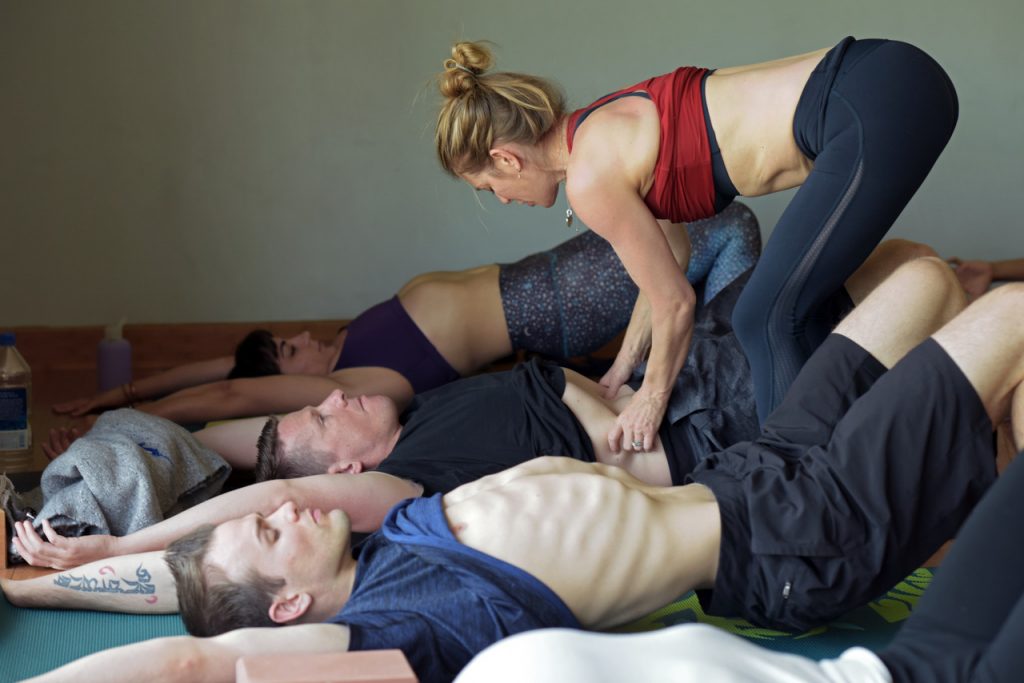
Her own movement practice is as diverse as her feed: it involves, on a weekly basis, yoga, pilates, HIIT, heavy weights, kettlebells, self-massage, jump rope, and walking. It’s not surprising that she believes yoga will continue to become a practice that involves a variety of disciplines. Bridging the gap between the communities of yoga, massage therapy, and fitness among others, is a mission she’s been on through her work, too.
Favorite way to move: “Currently, it’s a move called “Watching Paint Dry” that I learned from my Physical Therapist. It’s a very challenging isometric that finds all my weaknesses.” (here on her IG feed)
Favorite prop to use: “The Coregeous Ball by my company, Tune Up Fitness Worldwide. It has thousands of uses.”
What turns Jill on: “Singing, nature, playing with my kids. And sometimes a tight deadline gives me a boost of all of the aforementioned.”
And off: “Not being listened to.”
Check out Jill’s Instagram, her website if you’re curious about the Roll Model & Yoga Tune Up balls, and don’t forget about the blog section for movement education resources.
Cecily Milne
Yoga Detour

Cecily’s favorite word: Curiosity. “It’s the opposite of indifference, the key to social interaction, and the cure to boredom. And I just like the way it sounds!”
Cecily got to her first teacher training with an only goal to grow personally. During a discussion about ethics and being of service then, she had an epiphany and realized that helping people move and function at their best was her calling. After all, without a healthy body, we have nowhere else to live. From there, her philosophy evolved into this simple (though not easy to execute) idea: move well and move often.
Some of the people who’ve helped her get where she is are: her first yoga teacher, Jody Manley, who made her try Ashtanga yoga; Lovedeep Dunna, her strength coach and friend, who’s largely contributed to her understanding of movement, strength, and holistic health; Dr. Andreo Spina, the creator of Functional Range Conditioning; her mom, a professional dancer and model of entrepreneurialism, the reason Cecily’s always had an interest in movement, and in making her own way in the world; her dad, who taught her to rely on reason and logic and to remind her never to act on emotion.
These influences can definitely be found in the way she teaches yoga as a movement educator: her classes are not traditional, and yet she aims to foster the kind of self-awareness encouraged by the ancient practice.
Her classes and trainings invite questioning and continuous dialogue. In that sense, Cecily moves, both literally and figuratively, her own way.
How does she come up with such a unique way to instruct movement? We wonder. Well, her own practice is her lab: that’s where she tries new things out, makes discoveries, mixing up her knowledge, logic, and curiosity, and how she prevents her teaching repertoire from getting stagnant. Moderation is also how Cecily strives to use social media, and Instagram in particular. It’s a tool she uses much like her own practice: to foster connection, create (professional) opportunities, bring discussion to the table – this time not with herself, but the world.
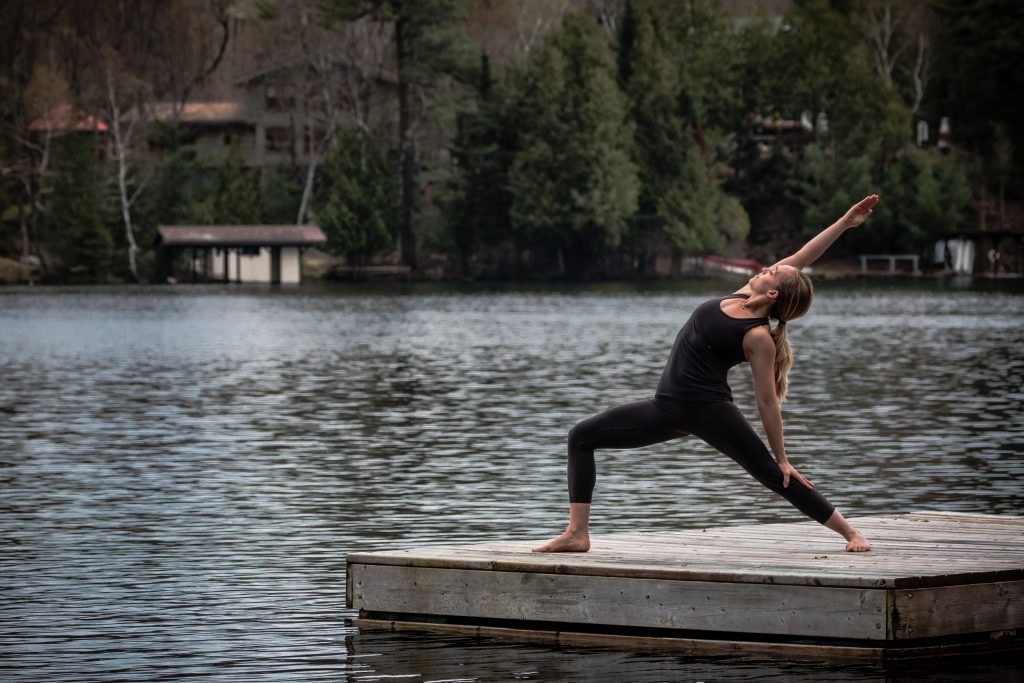
Favorite way to move: “The squat – any squat. Loaded or unloaded, doesn’t matter to me. I find that if I can just find time to sit in a squat every day, my body benefits. For years, I couldn’t squat with my heels down thanks to years of dance when I never worked on dorsiflexion. So now that I can squat, I love it – it’s my favorite expression of a global movement (something that uses the whole body). Right now I’m working on single leg squats, really challenging both my one-legged strength and range of motion. It’s my favorite expression of a global movement.”
Favorite prop to use: “Yoga blocks and a dowel would be my picks here… The options are endless. Anytime I can’t get to the gym, I’ll set up a bodyweight practice at home. As long as I’ve got blocks and a dowel, I can do all the things my body needs. I love creative prop work – showing my students how these simple objects can be used for far more than initially imagined.”
What turns Cecily on: “Time. Having nowhere I need to be. Nothing puts me in a better mood than having a whole day ahead that I can do whatever I want with.”
And off: “People giving me unsolicited advice. Thanks but no thanks.”
Check out Cecily’s Instagram, the Yoga Detour website, her YouTube channel, practice with her at Downward Dog Studio in Toronto.
Trina Altman
Yoga & Pilates Deconstructed®

Trina’s favorite word: circumferential. “It’s a quick way to describe the expansion that happens to your ribs when you inhale.”
Trina’s desire and confidence to teach came out of a number of things: chronic pain from sitting at a desk for hours on end at office jobs, the need to work in a way that fulfilled her creatively and that allowed her to move her body, and the realization that yes, women can change the world (influenced by Gloria Steinem).
She advocates for variety, arguing that any movement practice has to be enjoyable, but also diverse enough that our bodies are prepared to handle activities of daily life, as well as any other physical challenges we might fancy playing around with. One way she does so is through questioning: rather than prescribing movement that would supposedly fit all, she encourages us to be curious about what works for us. In that sense, her teachings might not be traditional, but they sure do embrace yoga’s core ideas. To Trina, it’s a practice that helps us self-regulate and be more aware of our minds and bodies, and ultimately, improve the quality of our lives.

From the realization that each body has to learn and apply what’s best for them, she created Yoga Deconstructed® and Pilates Deconstructed®. Rather than teaching a specific way to move, Trina aims to give teachers and students the critical thinking tools and modern science needed to teach and move in a way that fits any individual according to their possibilities and limitations.
Following her own advice, then, Trina’s movement practice varies, and besides practicing the movement she teaches, she also takes Gyrotonic, Pilates classes, and trampoline. Those activities feed her creativity, which she enjoys expressing through social media. On her platforms, she shares new exercises she comes up with, connects with forward-thinking teachers and curious students alike, and – hear this! – only posts when she feels inspired to. It seems like, to Trina, the key to well-rounded wellbeing lies in freedom – to move, learn, share, be.
Favorite way to move: “I love all forms of movement. However, I really like rolling around on the floor. It makes me feel like a kid again. I love to play.”
Favorite prop to use: “I’m obsessed with props, so it’s hard for me to choose just one! However, right now I’m enjoying using resistance bands in my classes because it’s new for my students.”
What turns Trina on: “Spending time with other creative people in the movement field. I get so much inspiration from seeing how we all come to the work differently, and each brings something unique to the table.”
And off? “Dogma. I don’t believe in rigid adherence to a specific methodology. I think it’s important to ask questions, evolve as we learn more about the human body, and be curious.”
Check out Trina’s Instagram, her website, and her interview with Rogue Yogi (Julie Tran) on our website.
Kathryn Bruni-Young
Mindful Strength

Kathryn’s favorite word: helpful. “Rather than thinking good or bad recently, I think helpful or not helpful.”
Kathryn started teaching a couple of yoga classes a week, and it organically turned into her full-time occupation with the realization that she couldn’t imagine doing anything else. But although she might have started as what you’d call a traditional yogi, her path has since then taken her to explore the world of strength.
Weightlifting, she tells us, has played an important role in developing the kind of movement she teaches today: it’s brought healing, intellectual stimulation, critical thinking, and answers she needed to practice.
From that pairing of weightlifting and yoga mindset was born her own way to move and teach movement, “mindful strength.” Kathryn believes that strength can take us to new places within ourselves; it’s not just biomechanics, it’s also about feeling power in ourselves and our bodies. In practice, this means she teaches workshops filled with science-based concepts and simple strength training exercises rather than complicated poses. In her small village in the countryside, she teaches yoga to 50+ year olds where the main goal is to help maintain their ability to move well.

Social media, for Kathryn, is a place where she likes to share her creativity, whether it’s in new movement, her latest knitting projects, or how she takes her gym and studio practice out in nature. She takes up the challenge of coming up with new content on a regular basis; it helps her reorganize the way she sees and thinks about movement. One thing she wonders about regarding social media is whether we stop thinking, researching, and analyzing for ourselves since so much is readily available out there. She reminds us not to take that information for granted, to get curious, and do our own research too.
Favorite way to move: “I currently have two favorite moves, the single leg squat is one, and the pull-up is the other. I worked hard for that first pull-up, and I believe it makes us feel our power more than any other movement. To be able to pull your body weight up and move around is pretty cool.”
Favorite prop to use: “Resistance band at the moment because it is accessible for yogis, but in my own practice the barbell every time. I love lifting weights, it’s become a mainstay in my routine, and the bar is something that feels like my yoga mat used to feel.”
What turns Kathryn on and off: “I can’t get work done at any time, I have to wait until I feel inspired and then I’m the most productive person in the world. I am the most creative when I sleep a lot, wake up early, eat three solid meals and pace around my house thinking about things and trying new moves. I also get really creative in the gym. If I’m having a good day and my body feels good I come up with my best ideas.”
Check out Kathryn’s Instagram, her website, listen to her podcast.
Jenni Rawlings
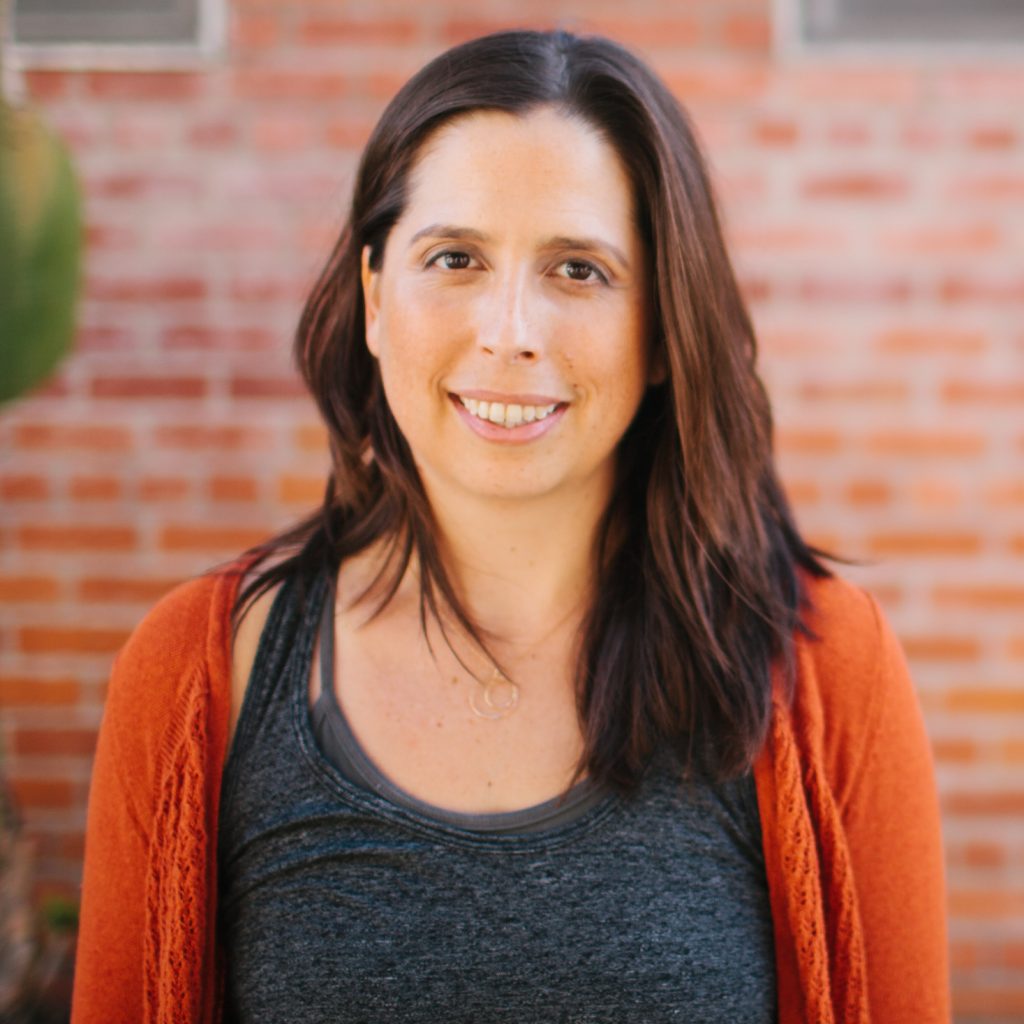
Jenni’s favorite word: adaptability. “I love this word because I think it’s important and optimistic for us to remember that the human body is very adaptable.”
Jenni first felt drawn to teaching yoga because she felt important elements were missing. One core idea behind her teaching is that no movement is inherently right or wrong. Teachers need to consider their students’ specific bodies, loading history, and movement goals to decide whether a movement is right or wrong for any individual student.
Jenni’s intention is to guide people toward smaller and more foundational movements so they can get in touch with their bodies and understand how they move. Load and variety also matter since they’re key elements to injury prevention and long-term joint health. Her teaching of yoga is, therefore, a well-rounded practice, and a process through which we get to know ourselves a little better.
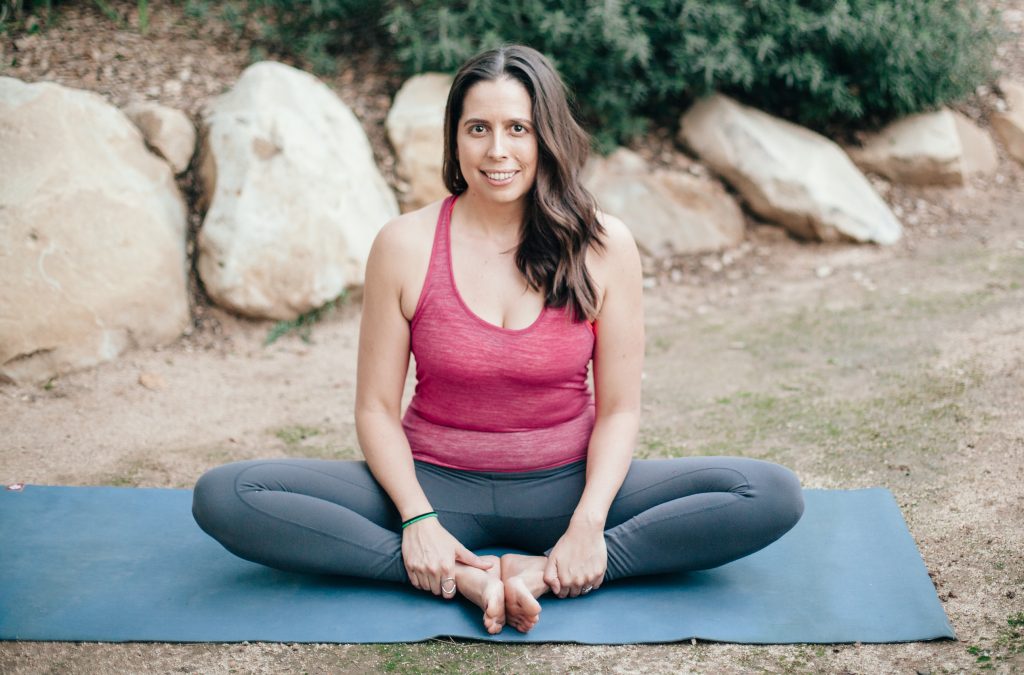
Jenni likes to use yoga blocks the “evil way,” making poses harder, not easier (try propping yourself up on 5 blocks in side plank, for example). This idea is in line with where she believes yoga is going: away from fundamentalism, toward evidence-based teachings and more variety for the sake of our health. Diversity for Jenni also takes the shape of new recipes in the kitchen, long dog walks to add to her movement practice, and endless curiosity for body science and human movement. This kind of variety feeds her creativity, which she, in turn, feels encouraged to share through social media, a tool she considers valuable when used in moderation.
Favorite way to move: “My favorite yoga pose is definitely handstand.”
Favorite prop to use: “I love all yoga props, but my favorite one to use is the good old yoga block! Yoga blocks (and props in general) have had a long-standing reputation for being “crutches”, or tools that people use in order to make yoga poses easier. Many people eschew props in their practice altogether, as though not using them somehow makes them more “advanced” yogis. Because of this tendency, I have a running joke on my social media feeds about all of the “evil” ways that we can use blocks in our yoga practice to actually make our yoga poses *harder*, not easier. People generally really appreciate this different approach to yoga props, and they often update their perspective accordingly!”
What turns Jenny on: “My creativity is naturally “turned on” by my continual desire to learn and educate myself.”
And off: “Fear-based beliefs and claims about the body that are unsupported by science.”
Check out Jenni’s Instagram, her website, and her online studio.
Katy Bowman
Nutritious Movement
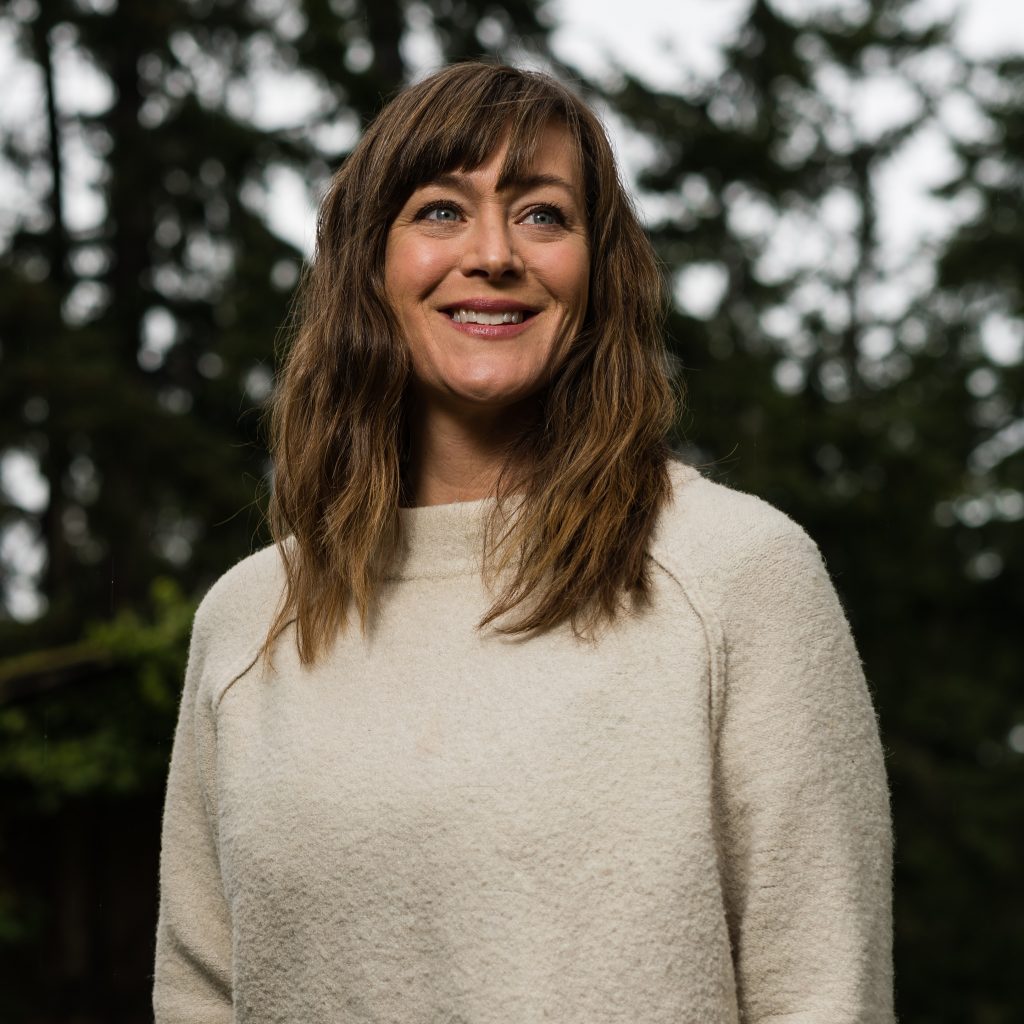
Katy is a biomechanist and author who knows the art of turning scientific jargon into language that’s easily accessible to all. When people understand simple words (and enjoy a good sense of humor, but that’s just our opinion), they can then take action. To Katy, the problem in our society today is simple: we don’t move enough. Her mission? Advocate for a movement-rich life, where moving isn’t limited to our 1-2 hour a day (if we’re lucky or dedicated enough) to exercise. We all have limited time and obligations – work, family, hobbies, and no extra time. So how do we fit more movement in?
First, we need to start to “de-compartmentalize” our lives: instead of seeing everything we do under labels like “work time,” “family time,” or “cooking time,” we can work at “stacking them” on top of each other. This means making time with family while cooking and moving, and finding ourselves cutting vegetables at the coffee table in a squat and involving children or partners in peeling potatoes and carrots – or even turn a coffee date into a walk.

Movement then stops being something we do for the sake of it and becomes the way we live our lives. It means that we bike or walk to transport ourselves rather than drive, that we get gardening on the weekends, that we refrain from buying a stroller for our babies and carry them when needed instead, or that we get rid of our furniture to spend more time standing, squatting, stretching, and sitting in different positions.
Finally, to Katy, this is all part of everyday life fun: threading all those activities together and engaging fully in them, moving in natural ways, getting curious about how our bodies work.
Check out Katy’s Instagram, the Nutritious Movement website, listen to her podcast, or read her books.
Giulia Pline
Physiyoga Teacher
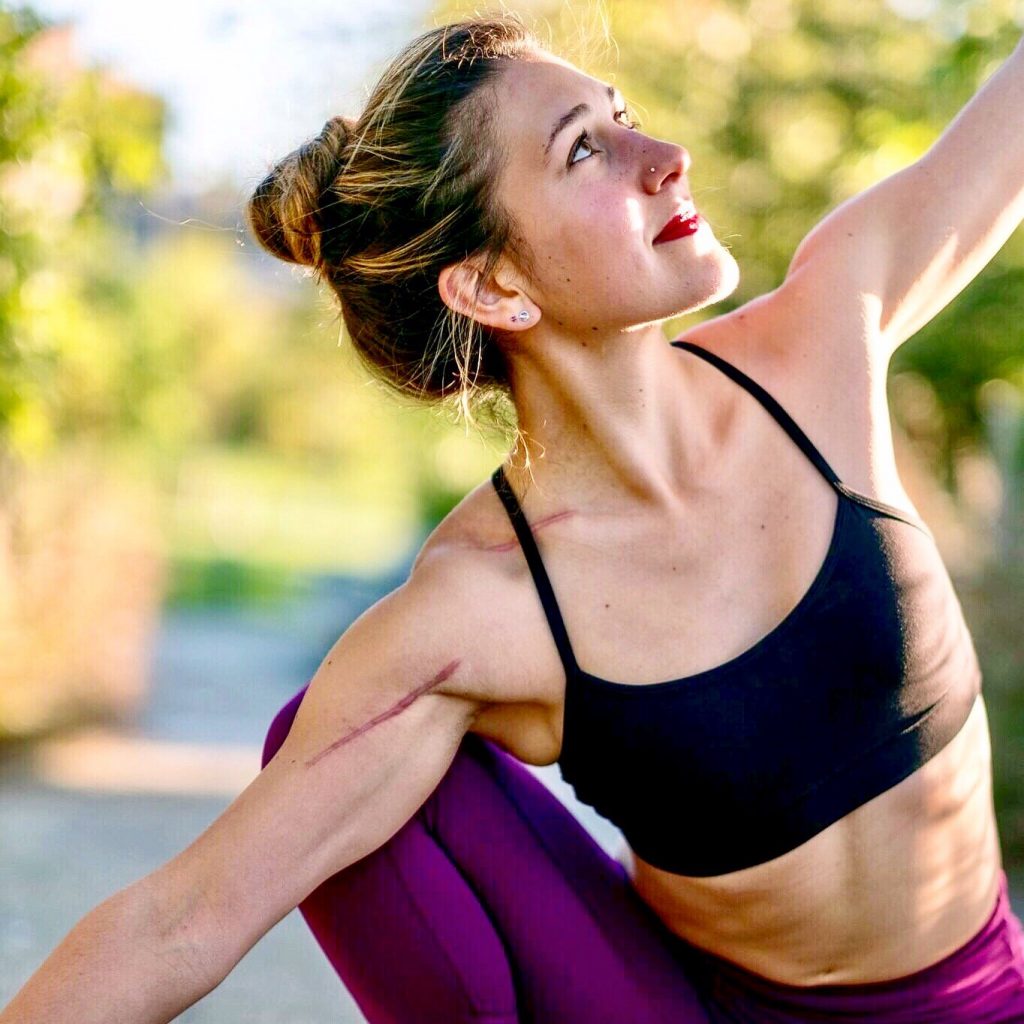
Giulia’s favorite word: tensegrity. “It’s a concept in architecture that also exists in the human body and beautifully summarizes both the stability and elasticity of not only our bodies but the structures, like bridges, that transport us to places outside of our comfort zones.”
Before making the shift to teaching yoga full-time, Giulia was a professional dancer. She fell in love with the introspective and rejuvenating aspect of yoga, and later, the science behind how movement, emotions, breath, brain, are all linked and function together. She suffered various serious injuries during a ski accident, which all had a major impact on how she teaches now: so movement is safer and more accessible to different bodies. She also wants to provide the vocabulary and clarity each of us needs in order to understand our own mechanics.
What matters more to Giulia is understanding concepts rather than focusing on mere techniques. In her classes, she aims to bring awareness and focus to the prerequisites of certain movements. She advocates an openness to exploring new movements on a physical level, and also, on the emotional level, acknowledging that there might not be one right way to move, but many possibilities to explore.
Giulia’s intention in her teaching is to connect both the intellectual and evidence-based aspect of movement and the heart element, where joy of moving and experiencing the breath come from.
Her teachings are infused with the learnings she’s gained through getting injured, and specifically through healing both physically and emotionally from her ski accident; her passion for dancing; her endless desire to explore, discover, educate on the whys and hows of movement; her education as a physiyoga teacher, which mixes physical therapy with yoga; her desire to offer a more open-minded and well-rounded kind of yoga. This translates into classes that combine corrective exercise, functional mobility work, and knowledge from the physical therapy world with yoga & breathing practices.
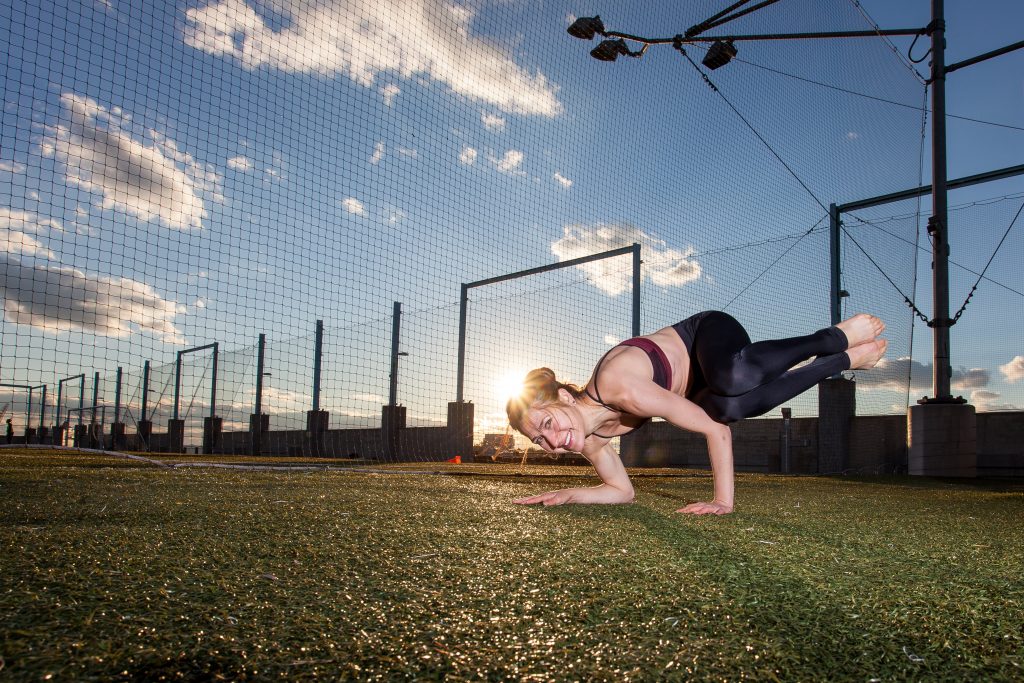
Giulia believes that’s also where the practice of yoga is headed: toward better-informed teachings, based on research to guide our exploration. She is lit up by genuine and generous teachers who care about the growth of the community as a whole. This is also how Giulia uses social media – whenever she feels called to, to share her knowledge, help others so they can help their communities too.
Favorite way to move: “Standing twist.”
Favorite prop to use: “Resistance bands! My skiing accident led me, as a Physiyoga teacher, to create workshops and classes using resistance bands and yoga. I have developed a weekly class called Banded Kula Flow at Kula Yoga Project Soho in NYC. The class utilizes various kinds of resistance bands and corrective exercises with intelligently curated yoga sequences. It is an integrative blend of added resistance and load for stability, mobility, greater proprioception, strength, awareness, spaciousness, and movement inquiry in a yoga practice. I am currently teaching resistance band and yoga workshops around NYC and other parts of the U.S, in addition to my weekly resistance band and yoga class at Kula.”
What turns Giulia on: “Working with props like resistance bands and yoga blocks, dowels, blankets, etc. turns on my creativity. Creating space for my personal meditation practice turns me on spiritually and emotionally and directly affects my creativity.”
And off? “Not sleeping well or allowing for quiet personal time.”
Check out Giulia’s Instagram, her website, her interview with Jim Catapano on our website.
Guru Jagat
RA MA Institute

Guru Jagat is a kundalini teacher; her mission through classes, trainings, podcasts, world events, talks, and social media is to pass on the wisdom found in this ancient practice in a way that is accessible, youthful, and humorous. A key element in her teachings is understanding the modern world we live in and using the kundalini practice to enliven our day to day lives.
In a light-hearted and poetic way, Guru Jagat encourages responsibility, taking action and initiating new ways of thinking.
One way to access those is through the practice of Kundalini, where the focus is on kriyas, postures, chanting and breathwork; all in all, a straightforward “how-to” to increase energy, mood, clarity, and creativity. Guru Jagat advocates for the practice as a way to cultivate our own strengths so we can use what’s available to us to live more connected and aligned with our possibilities, in a world where dating, working, eating, and the meaning of the word “prosperity” are more complex than when kundalini was first practiced.
Through the practice, we build more self-awareness, which can help to redefine what being a woman means, or in her words, the feminine archetype. In an age where the role of the woman (and man) in society is changing, she believes raising awareness through practicing Kundalini is a way to be part of this change. The fact is that although emancipation is happening for women, it can still feel rigid and limited, and the kundalini practice can allow us to go beyond inner peace and toward a more proactive way of living.
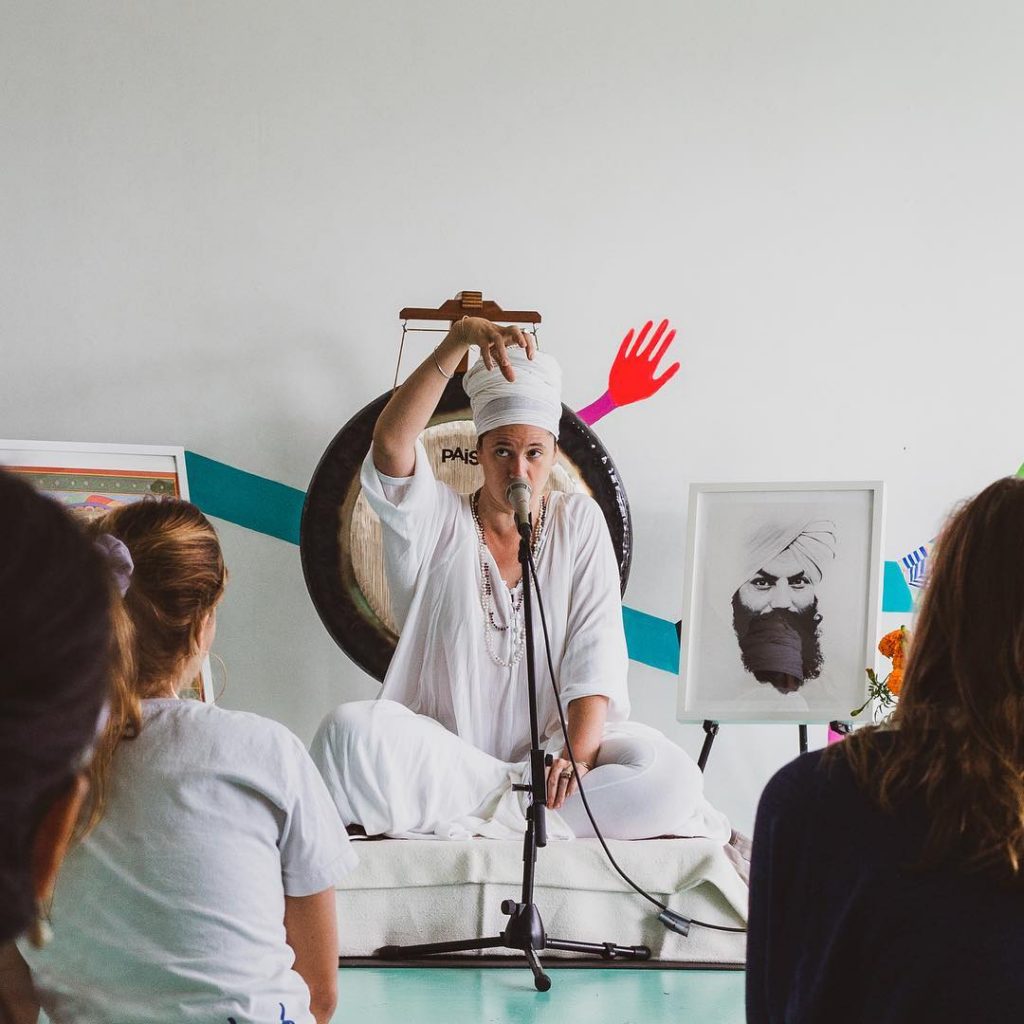
Her modern approach is visible through her interesting use of the word “technology” to describe Kundalini; on her Instagram feed, you’ll find jokes, memes, funky artwork alongside talks on divine evolution, the Aquarian age and the full moon in Sagittarius, yogic dating, and reminders not to be self-absorbed and focus on what you can do in the world to be part of positive change. A true modern yogi, she is!
Check out her Instagram, her website, listen to her podcast, Reality Riffing, visit her RA MA institute in New York, LA or Mallorca, Spain. You can also read more about Kundalini yoga here, and read Hawk’s guide to yoga in LA where Guru Jagat is featured.
Jenn Pilotti
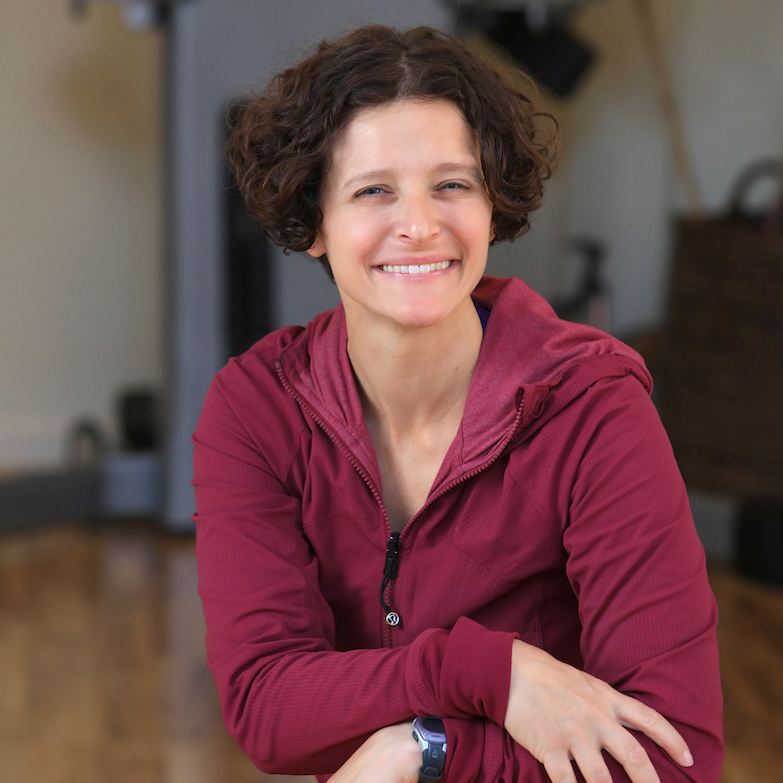
Jenn’s favorite word: feel. “So much is wrapped up in those four letters.”
A pull to learn is at the core of Jenn’s decisions regarding movement education, both as a student and a teacher. Becoming a movement educator happened for her through trial and error.
An Ashtangi student, she became frustrated because she didn’t find her movement practices interesting enough, and didn’t feel she was getting better physically practicing Ashtanga.
That dissatisfaction ultimately led her to go to graduate school to study human movement. She was looking for a way to create an environment where people would be able to grow through movement.
2 years of graduate school later, in addition to learning about embodied movement, and turning to the study of the neuromuscular system, motor control, and somatic practices (specifically Feldenkrais), Jenn finally felt she had the tools to create a movement practice that would help develop senses of freedom, awareness, and strength.
In practice, Jenn focuses on what’s needed for us to be strong and mobile for the movements we enjoy doing, being flexible enough to play, while staying open to new ways to do things – both in terms of pace and variety. To do that, it’s necessary to be aware of what works well, what doesn’t, to get acquainted with our own operative systems, and to re-establish a connection between mind and body – a mission she’s gladly taken on.

Jenn believes momentum is picking up in the yoga and movement communities, and that yoga in the future will continue to adopt skills and concepts from other disciplines, and we might even be able to find hybrid teacher trainings. She believes it’s going to become less and less possible to ignore the science, like the fact that we thrive on varied movement, that strength is good and load is helpful, that fun can be a good reason to perform a movement, or that restoration is just as important as work.
One thing that makes her feel less alone on this path? The ability to learn from others without being limited by geography. Access to information through the internet, books, and social media is one thing she values, and that has had a major impact on her life. Whether it’s through academic articles from journals, non-fiction reads, online courses, or social media posts, Jenn feels she can feed her curious mind and give back, in turn, through her own teachings.
Favorite way to move: “I like pull-ups for strength. I love handstands, though I am not terrifically good at them, but they feel amazing when you find the balance point. I am also very happy rolling around on the floor for flexibility. I find the shapes I end up in and the kinesthetic feedback interesting.”
Favorite prop to use: “I have several! Plyo boxes are so versatile and can be used for so many things. Everyone can benefit with a little bit of hanging in their life, so a climbing/pull-up structure. And the yoga block should absolutely be included.”
What turns Jenn on: “Nature definitely turns me on. I run regularly, and that does wonders for my creativity — the amount of articles/lectures I’ve written on my runs are too many to count. Listening to people who are passionate is also an emotional/creative turn-on — I am most inspired by those who believe they have the power to elicit change, no matter how small.”
And off: “The news, politics, and fog. Seriously, constant drizzle can really wear on you.”
Check out Jenn’s Instagram, her website, and her Be Well Personal Training Studio on the Monterey Peninsula, California.
Shante Cofield
The Movement Maestro
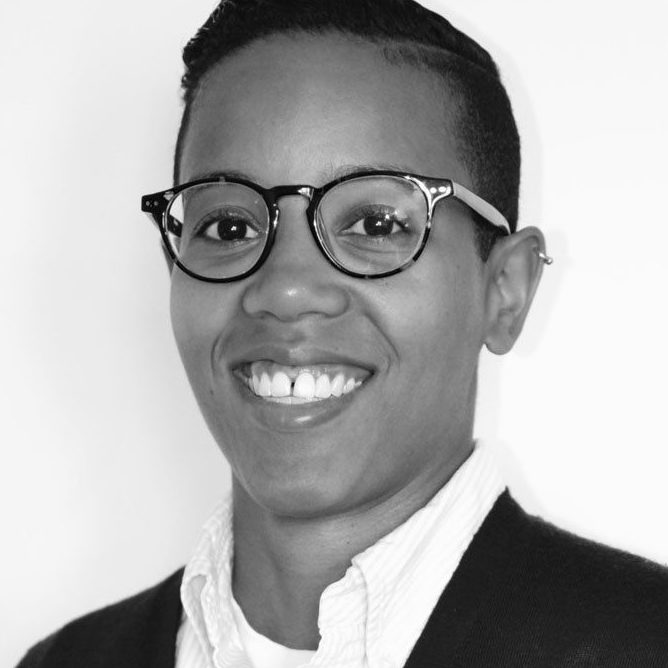
Shante’s favorite word: “I don’t have one! Words matter. A lot. I couldn’t narrow it down to just one.”
After Shante said no to medical school, her college counselor encouraged her to become a physical therapist. And after attending a RockTape course taught by Perry Nickelston (featured above), she realized that there was more than one way to make an impact in the healthcare field. And that’s how she decided to become a movement educator.
Two things are important to Shante when teaching: one, to help each student understand that their experience with and learning through movement is inherently theirs. Shante believes we’re our own greatest teachers in that if we want to learn about movement, we have to experiment with it. Her second goal is to help students understand the reasons why they’re unable to perform a particular movement. For fear of repetition in this article, Shante is, too, an advocate for teaching to fish rather than giving students fish; if each is equipped to understand concepts rather than specific techniques, then any movement issue or obstacle can be more easily overcome.
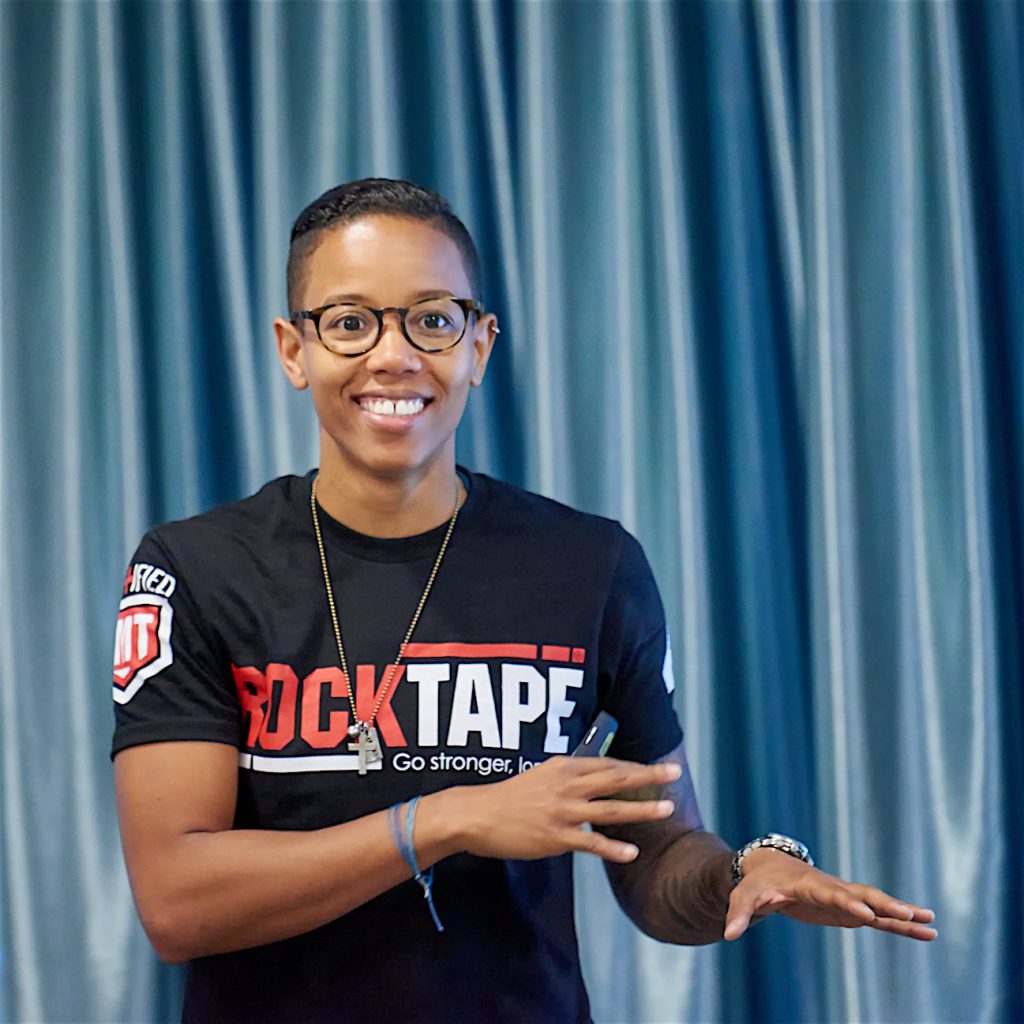
At the heart of her teaching, then, is explaining the concepts of stability and mobility, and that, often, pain and dysfunction exist because of a lack of stability. To solve such problems, she uses developmental kinesiology as foundation for her work. When she assesses movement (and teaches how to assess), she does it through groundwork. This also means doing breathwork and rolling (2 of the most foundational movements we have), and focusing on feeling movement to truly understand it.
Shante is full of energy. If she’s not at her CrossFit box, as she calls it, she’s posting and connecting on social media, helping patients assess their pains, speaking to experts on her mic, teaching about RockTape, or riding her Jeep Peggy around Southern California.
Favorite way to move: “Running. There’s nothing quite like watching a skilled sprinter work their magic. Power, grace, mobility, stability, elasticity, control…it’s all there.”
Favorite prop to use: “RockTape is an incredible way to improve awareness and change movement reflexively via tactile cueing. Similarly, I’ve been utilizing silicone cups (more specifically, RockPods) to provide the same tactile cueing and kinesthetic guidance that tape does, but in a more temporary fashion. Since all movement, strength, flexibility is granted to the nervous system, touching the skin immediately sends signals to the brain and can improve the connection that you have to that body part. Truly fascinating stuff.”
What lights Shante up: “Passion. For anything. A person who is willing to be openly excited and passionate about something will always grab my attention. The world needs more of it.”
Check out Shante’s Instagram, her website, and listen to her podcast.
Hunter Cook
Hunter Fitness

Hunter Cook focuses on mobility training that he does through Kinstretch – a form of workout meant to increase our active range of motion, which grows limited through aging and our modern lifestyles. He educates and raises awareness around the importance of healthy joints, strength training, and how essential assessment is before adopting a movement practice that’ll help heal and ease our body limitations.
For anyone who is curious about improving their body condition, he advises to work with a trainer or coach and experiencing movement, rather than reading countless books and taking advice online.
The decision to spend time working a specific movement to improve range of motion is very personal and depends on many factors, and mobility work has to fit a person’s needs.
He believes learning comes through trial and error, and that the support you get from having a mentor by your side is crucial to embrace and make the most of that learning experience. Human anatomy should be approached in an applied way because each body is unique and adaptable, and what is healthy for a dancer might not be healthy for a football player.

Besides, Hunter wants to “make critical thinking cool again” (which makes online advice a tool rather than a magic pill for our body and mind ailments) and encourage people to not be afraid of movement. Our bodies are resilient (not “paper creatures,” in his words), and you’ll find examples of why practice matters so much, and what evolution looks like for different bodies on his Instagram feed. Mixed in, you’ll find pictures of Rasco, his dog, skies around the world, a climbing or yoga practice here and there, and a little science about how to make the perfect cup of coffee at home.
Check out his Instagram and his website.
Tom Myers
Anatomy Trains
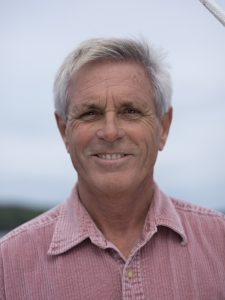
Tom’s (current) favorite word: compersion. “It describes a wonderful state: Pleasure in the pleasure of others. It contrasts to the German schadenfreude – delight in the misfortune of others. There’s a lot of work to be done, and I delight in how successfully others are spreading love.”
Tom Myers (and his faculty) advocates for a view of the body that is interconnected rather than made of isolated parts. His school, Anatomy Trains, is based on an approach that pays attention to how muscles and bones work together, how muscles work together and how imbalance in one can impact others.
The work he does is greatly inspired by Structural Integration (or “Rolfing,” work by Ida Rolf). One aspect of his mission is to raise awareness around the fact that the body impacts the mind just as much as the other way around. To Tom, then, yoga is a practice we can use to reconnect to our bodies as a whole and let that connection inform our decisions.
He argues that in our western society, we’ve somewhat dismissed and forgotten about certain parts of our bodies, and that becomes a problem because intuition is also anchored in our bodies.
How do we do that? Looking for limitations imposed on someone’s body and, like Michelangelo took everything away from blocks of marble that didn’t resemble David, going back to our bodies’ original states of ease, stripped of the stress our everyday lives put on them. Rather than adding on to our shapes and structures, the process is one of elimination. For example, he encourages us to practice yoga in airports outside of yoga rooms, getting rid of self-consciousness to serve two purposes: feel good and make it normal to move in public.

Fascia and myofascial release are words you’re going to come across a lot through Tom’s educational content. Fascia is a connective tissue that, like a net, binds body structures together, and that – new research shows – serves as a regulatory system too (much like the nervous system). Tom mentions the importance of bringing yoga to the anatomy table; to do so, yoga practitioners and teachers need to learn the language of anatomy, so all movement and well-being educators can work together to cure lifestyle-related ailments.
Favorite way to move: “I have a few. One is yawning. Never underestimate yawning, and never stifle a yawn out of politeness. Yawning and stretching (it even has a scientific name: pandiculation), as you and most animals do after sleep, is a great way to break up any incipient fascial adhesions. It also gets your sensorimotor nervous system ready to move. I usually leave my bed a big mess, because I do a lot of yawning, stretching, and moving before I even get out of bed in the morning. Pandiculate!”
Favorite prop to use: “My favorite tool is two balls in a sack. I mean it – for the cheap version, tie two tennis balls into an old sock. For a more engineered version, try anything from that old standby, the Ma roller, to Jill Miller’s and Sue Hitzman’s modern versions. It fits easily in my suitcase and is the first thing to come out in some hotel room before I start my work. I put the balls on either side of the spinous processes to roll the airplane tension out of my back from the top of Thoracic spine all the way down. You can adjust the tightness of the knot to get a different part of your back, and it reaches the parts you can’t reach yourself. It’s my ‘massage therapist in a jar’.”
What turns Tom on: “Honesty. The willingness to work for the world’s enlightenment even though it looks pretty hopeless right now and the baubles of temptation surround you – that’s a turn on. The younger generation’s commitment to honesty and emotional care is a definite turn on.”
And off: “Convenience. It usually means that I just gave up some of my movement in return for the freedom to pay someone else to do it. My ’new’ car has a button I can push to close the tailgate. Sure, it’s a ‘labor-saving’ device, but I don’t get to reach up and pull it down anymore, so my movement day is a little bit impoverished. And then I have to work harder to pay for the expensive car with all these labor-saving conveniences. Bah!”
Check out Anatomy Trains’ Instagram and their website.
UPDATE FROM SU&Y TEAM:
Dear readers,
As you know, about a month ago, we published an article featuring 19 teachers we admire and learn from. After posting the article, many of you brought to our attention those who are missing on the list. We recognize how we overlooked amazing teachers who do not fit into popular yoga culture. There is a lack of diversity in our article, and for that we are sorry.
It has been eye-opening and humbling, to say the least, and we are using this as an opportunity to reflect on this more deeply in ourselves and as an organization. We take our responsibility seriously and recognize that there is no deadline on this work — it starts now. We’re looking at our caveats and the ways we can do better right now and in the future.
This is our learning journey; we’re excited and grateful to be able to take on the challenge of growth in all it entails. Thank you to all who shared their opinions and voiced the urgency of this matter. We’ll keep making mistakes and we encourage you to keep calling us out where we can do better.
Now it’s time to shut up and listen. What are the questions you’re asking yourself and that we should add to our conversations within our team and with you? Share in the comments below.
Written by Ely Bakouche

